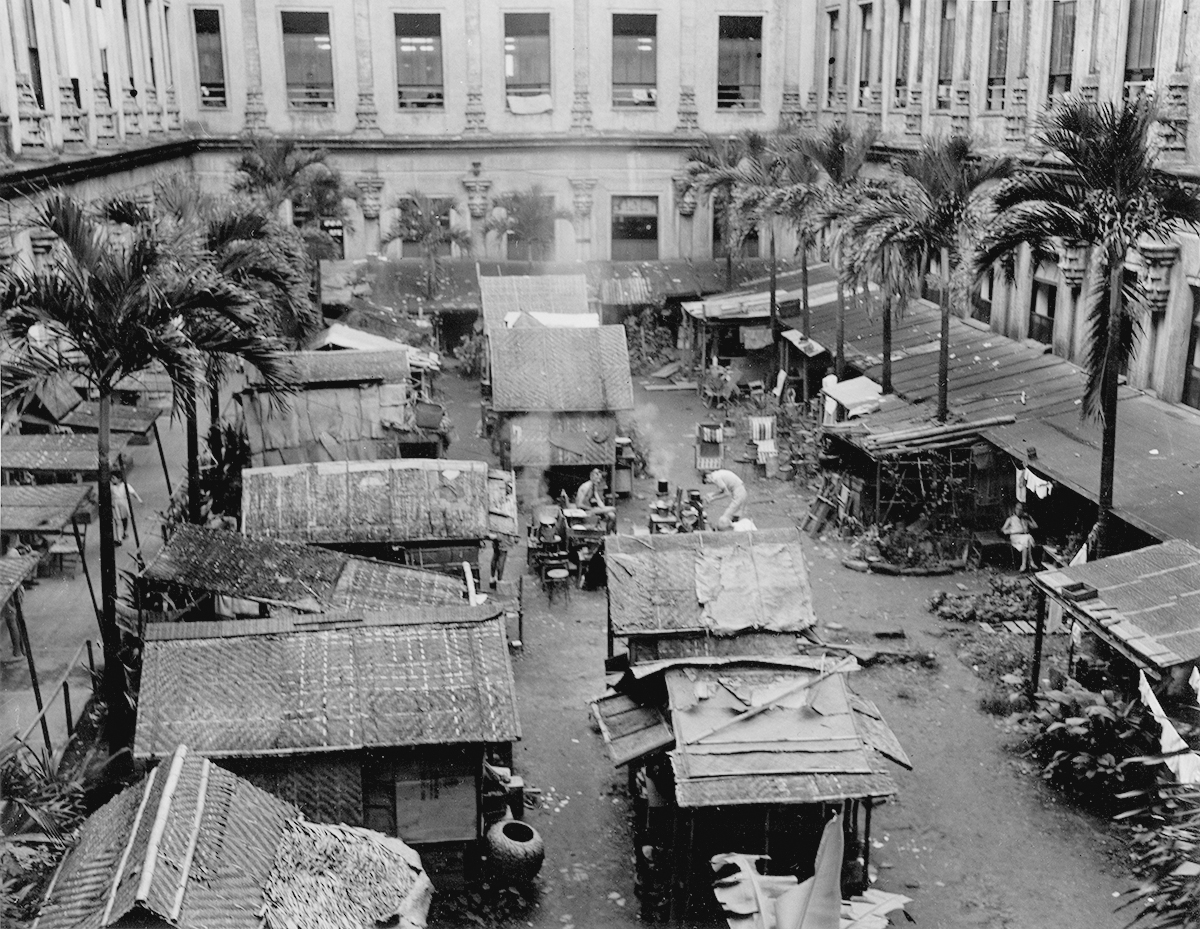Internees constructed some six hundred shanties, like the ones pictured here, to provide relief from the overcrowding at the University of Santo Tomas.
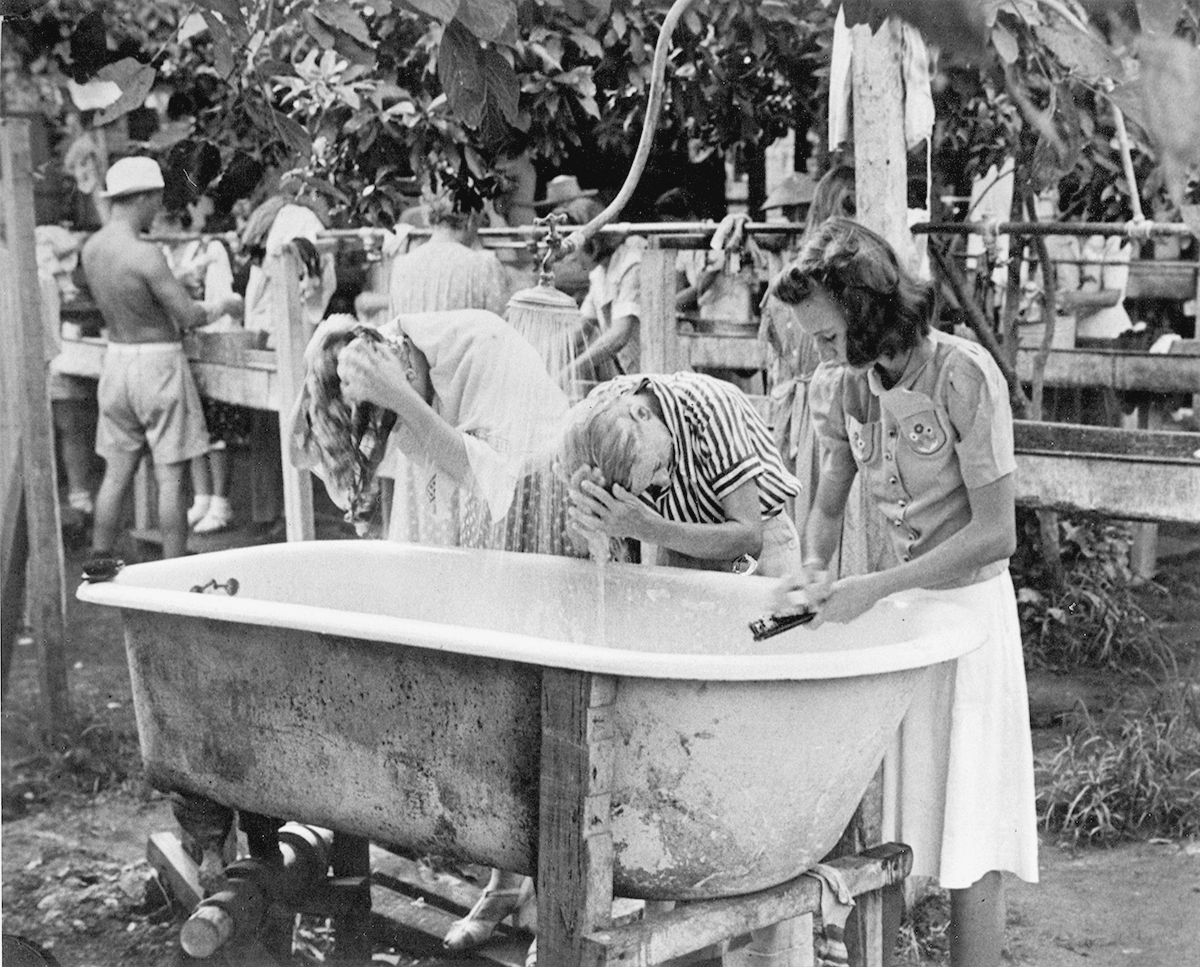
Trapped behind the university’s towering walls, several thousand internees used ingenuity to turn the roughly fifty-acre campus into a functioning small city, including converting an old bathtub into a sink.
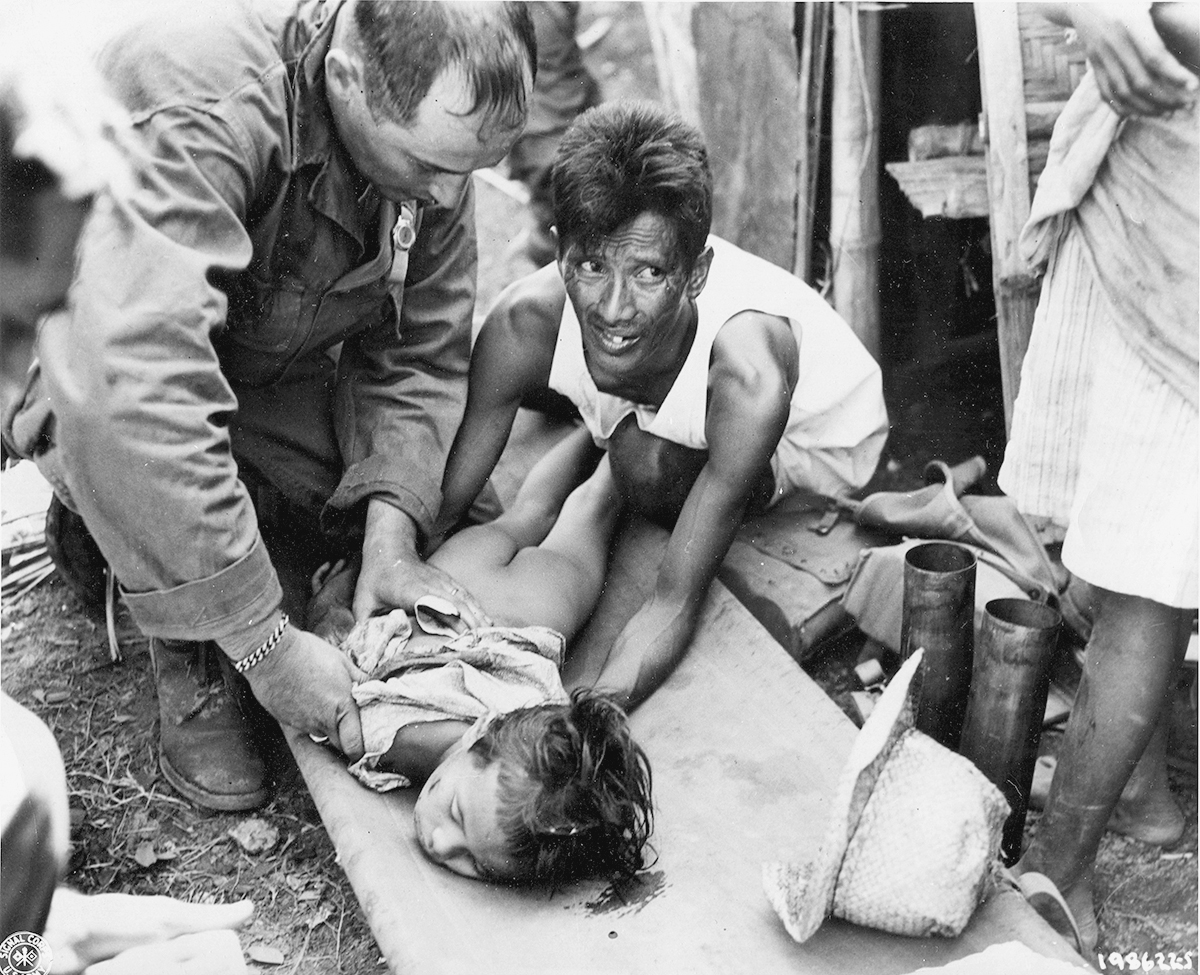
An anguished Filipino father brings his wounded child to American medics after the youth was injured during shelling of the beaches in preparation for the Luzon invasion.
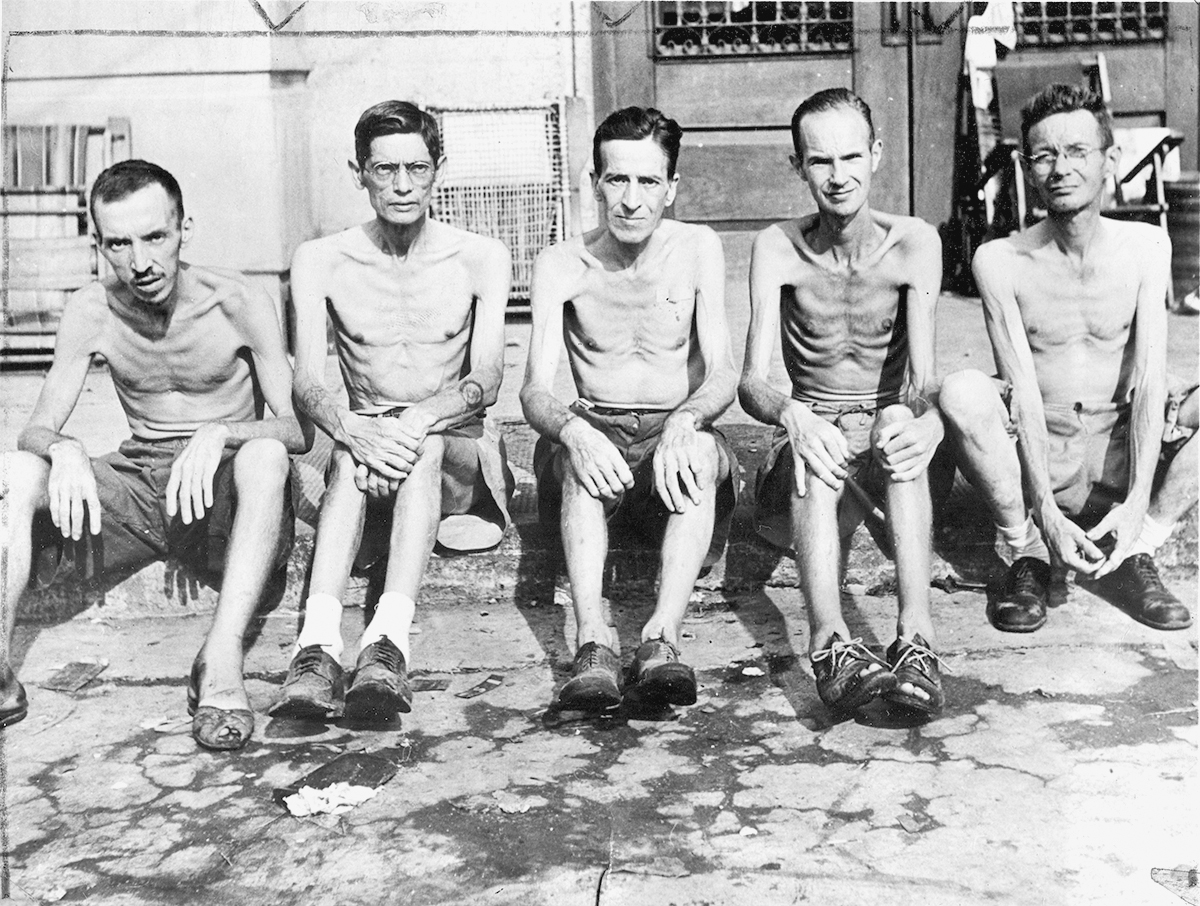
The story of starvation at Santo Tomas is written on the emaciated bodies of former internees (left to right) Arehugo Winkler, Thomas Loft, Arthur Williamson, Harold Leney, and David Norvell. The five men lost a combined total of 273 pounds.
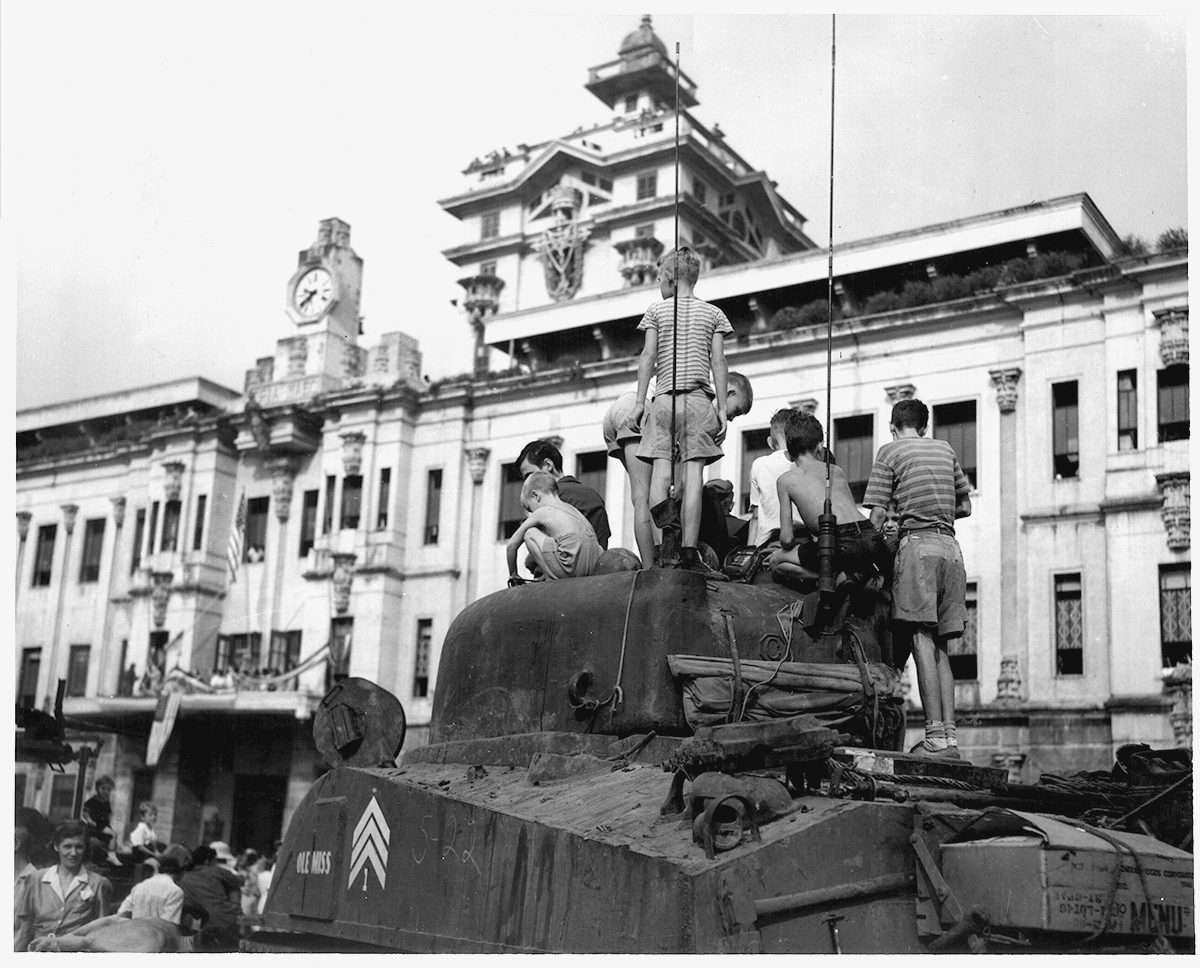
Internee children play atop a Sherman tank on the grounds of the University of Santo Tomas, which was liberated by American forces on February 3, 1945.
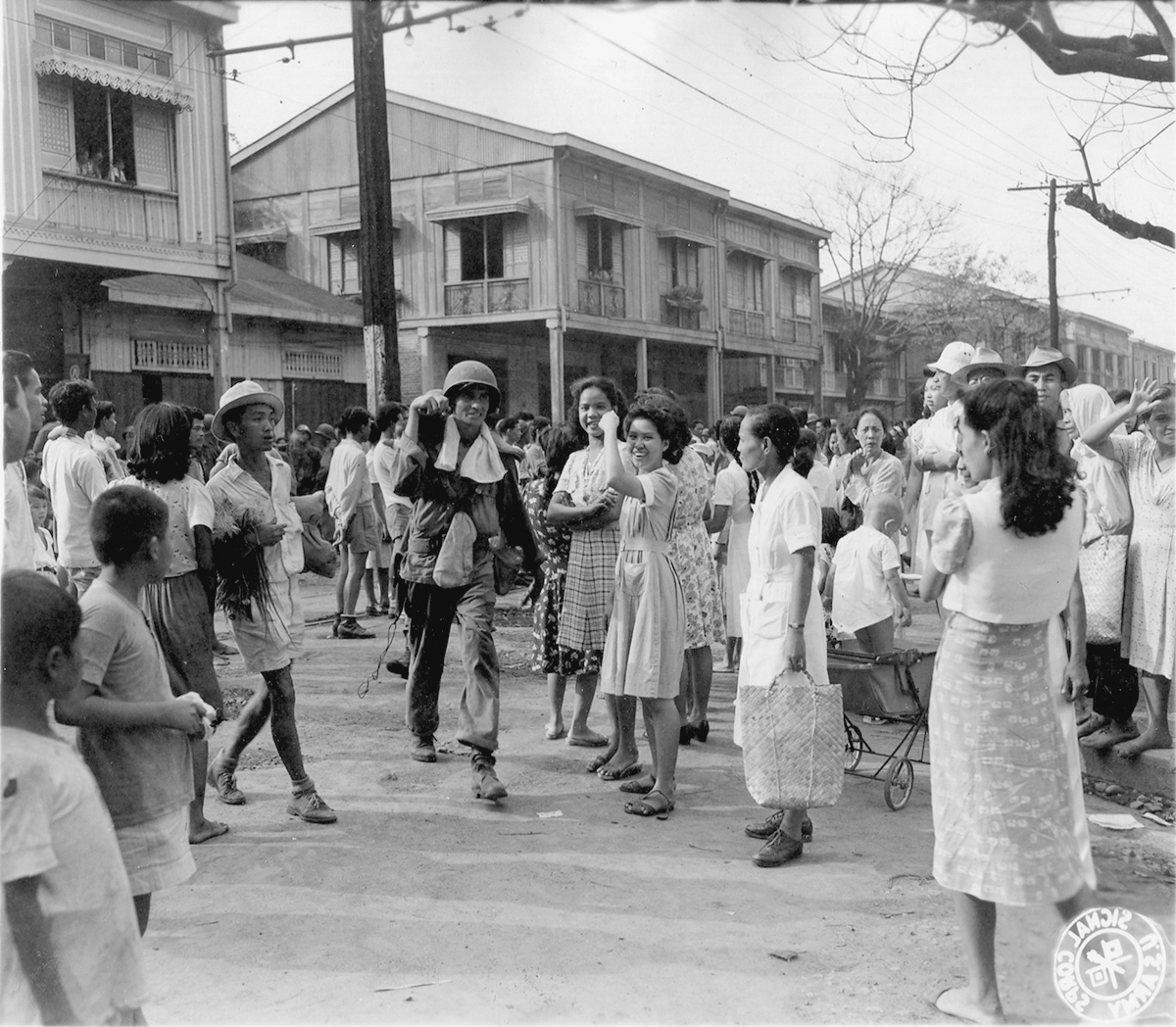
After three years of suffering under the Japanese, Filipinos pour out into the streets to greet American troops on February 4, 1945.
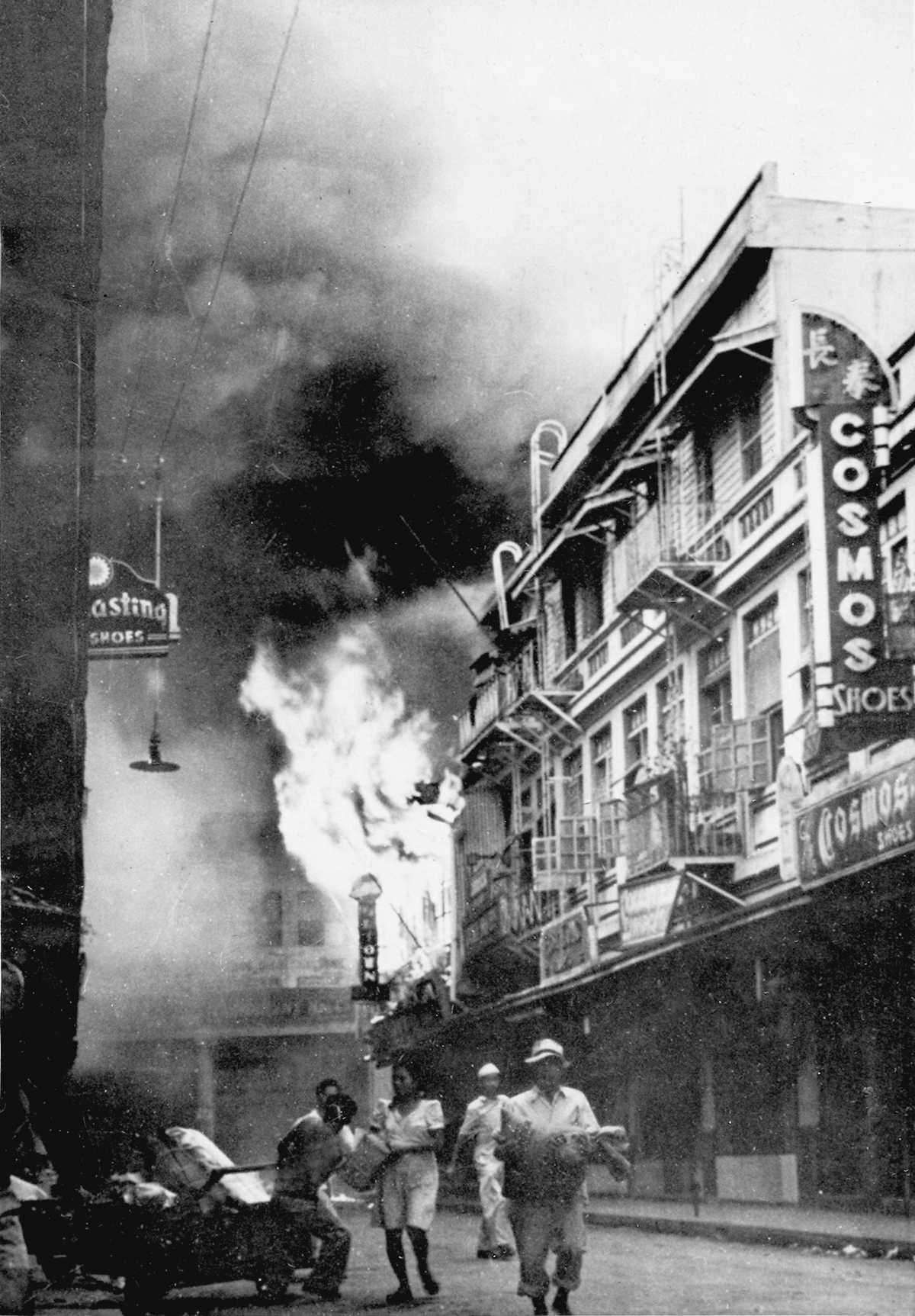
Terrified Chinese civilians flee the fires set by retreating Japanese forces, the smoke from which rises on the horizon on February 5, 1945.
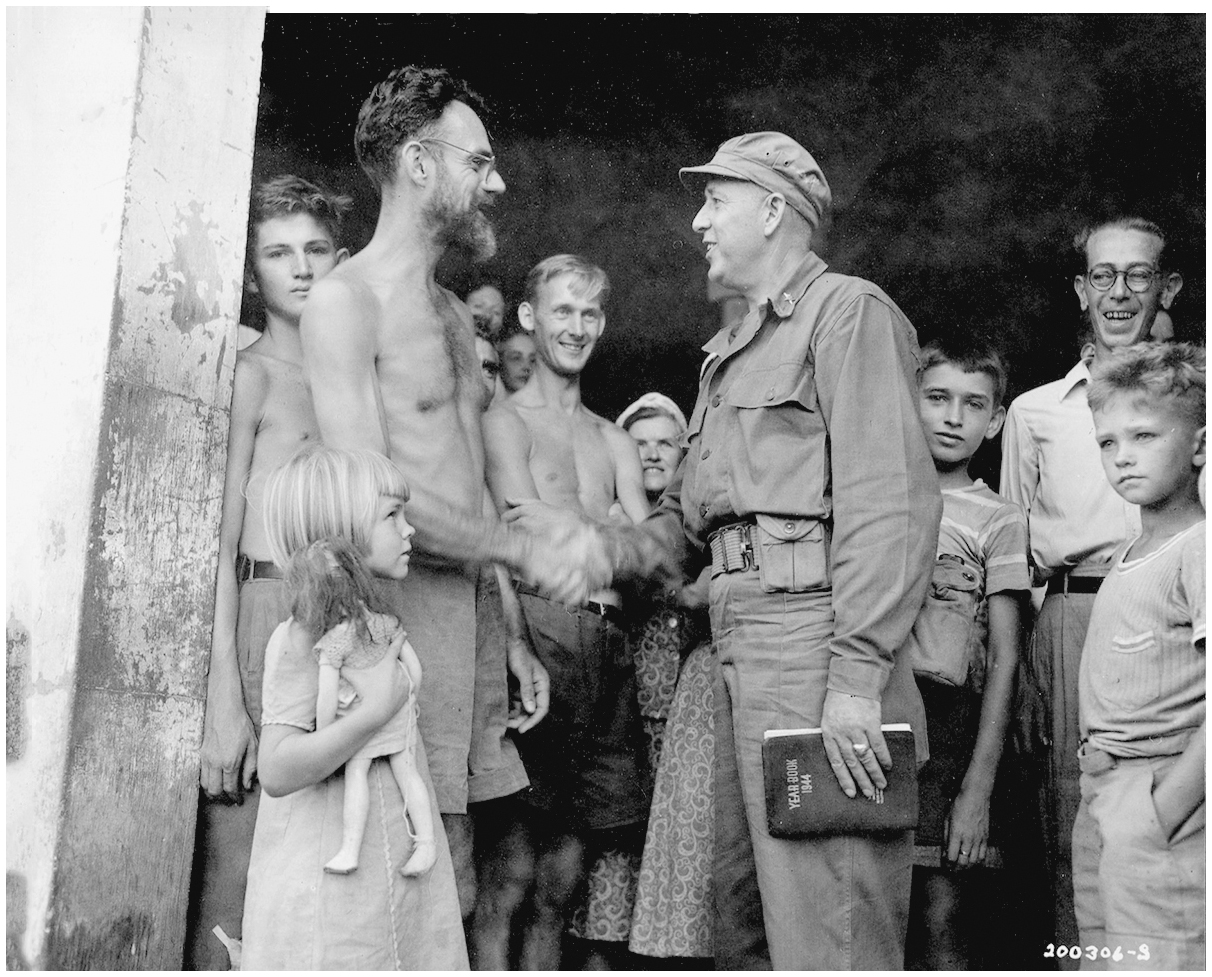
Brig. Gen. Bonner Fellers shakes hands with civilian internees at the newly liberated Bilibid Prison on February 5, 1945.
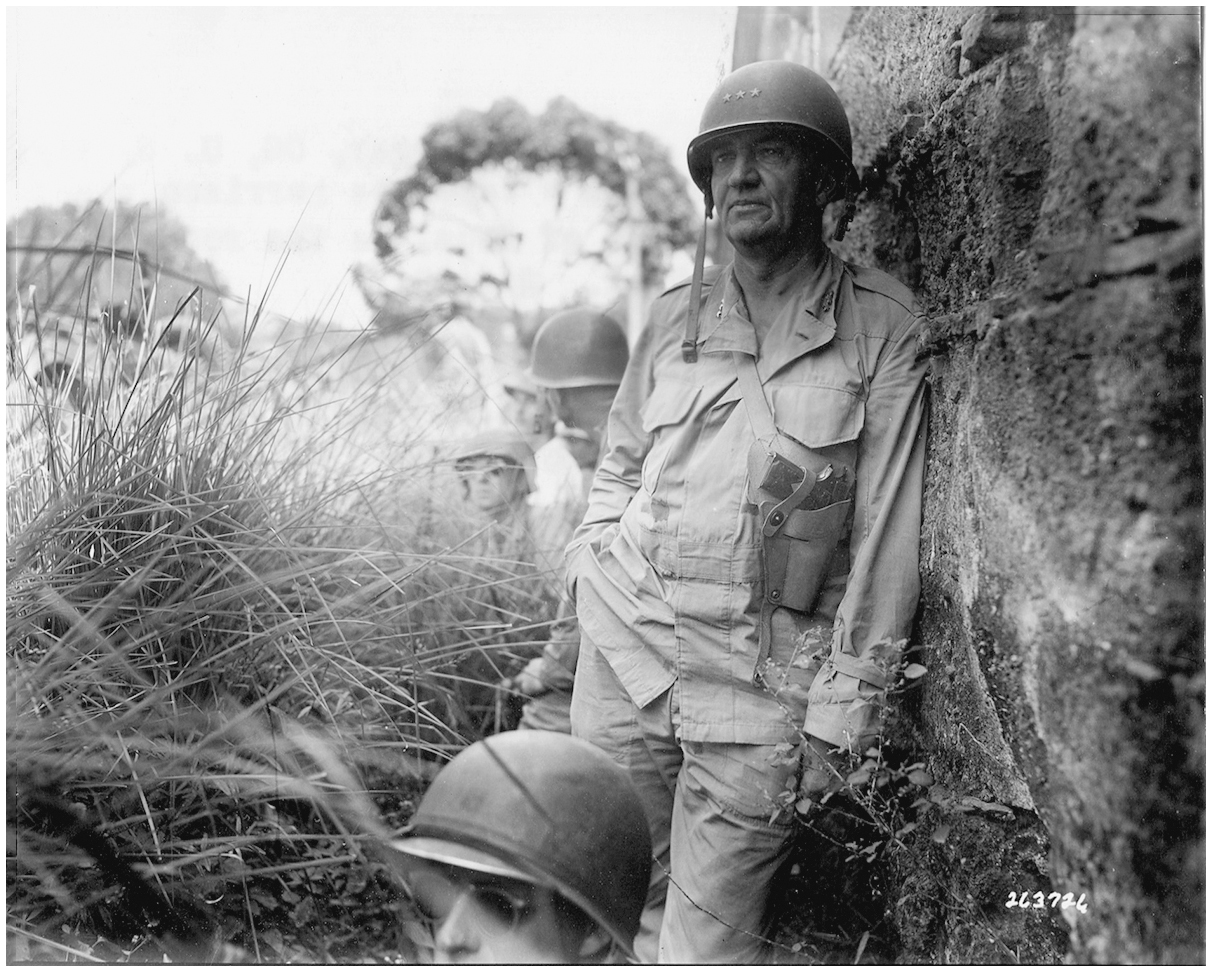
Eighth Army Commander Lt. Gen. Robert Eichelberger, whose forces were ordered to close Manila’s southern door, takes cover as a Japanese garrison opens fire on American troops at the village of Imus, en route to the Philippine capital on February 4, 1945.
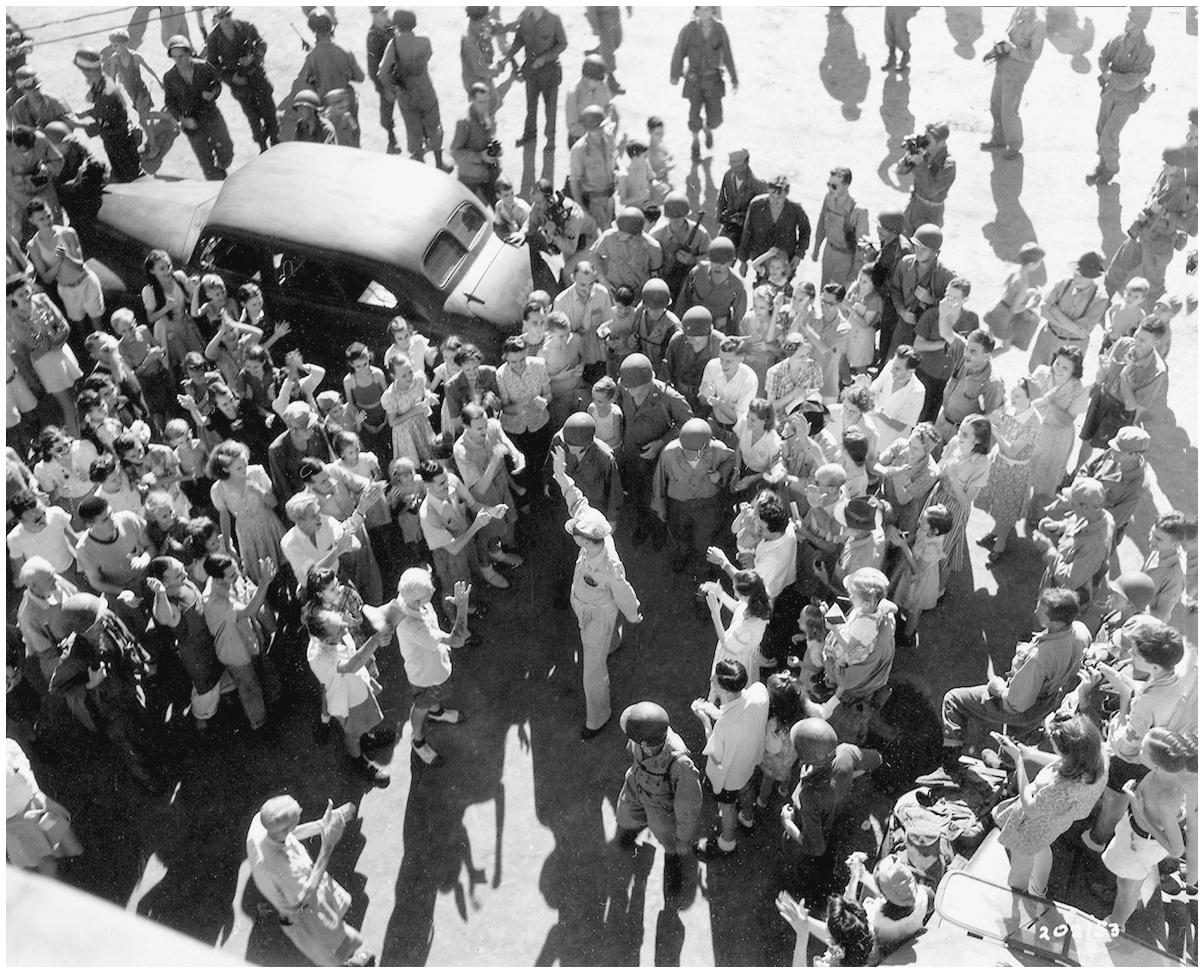
Throngs of internees encircle Gen. Douglas MacArthur as he exits his staff car for a visit to Santo Tomas on the morning of February 7, 1945.
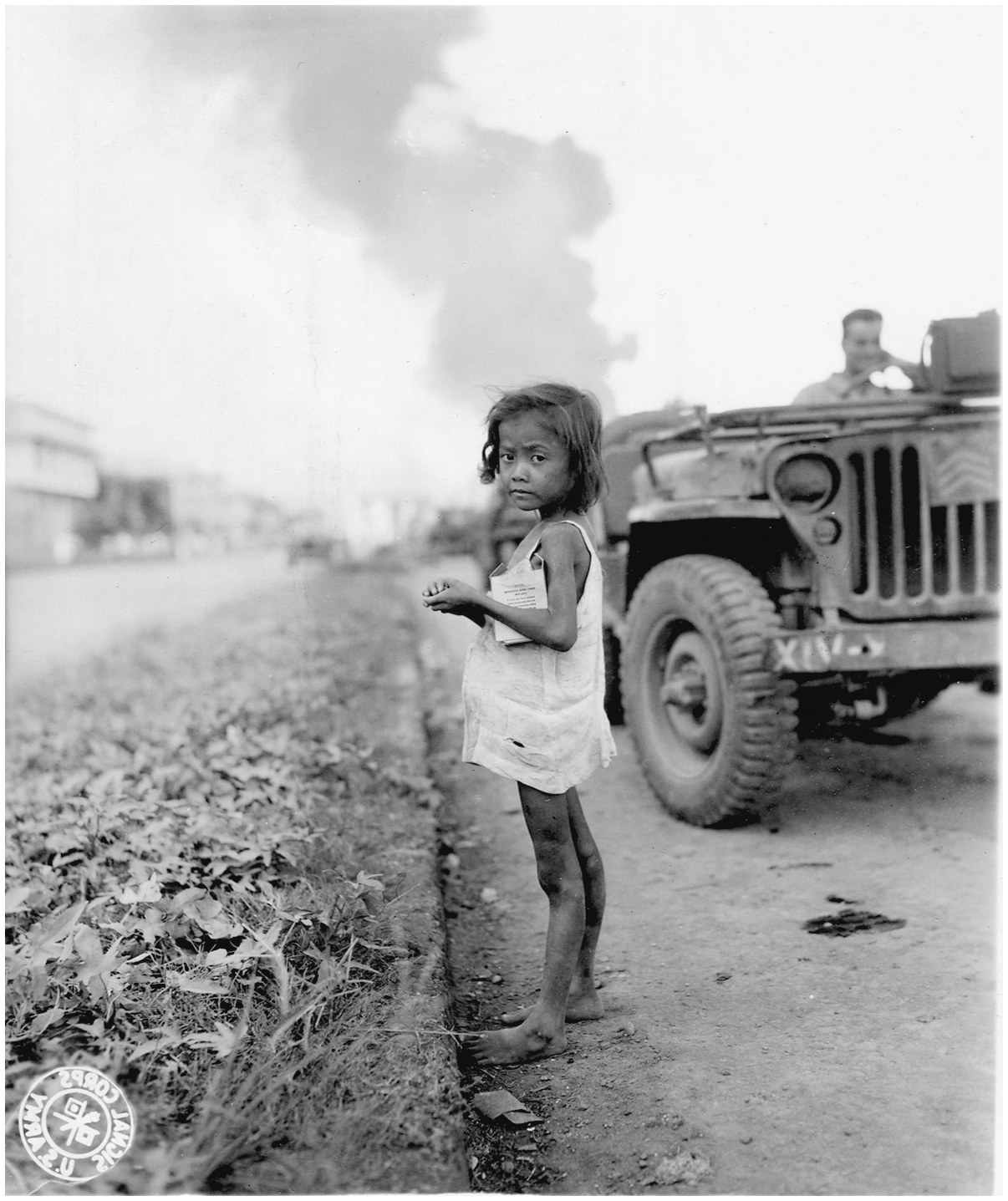
A half-starved Filipina girl clings to a box of army rations while the city burns in the background on February 7, 1945.
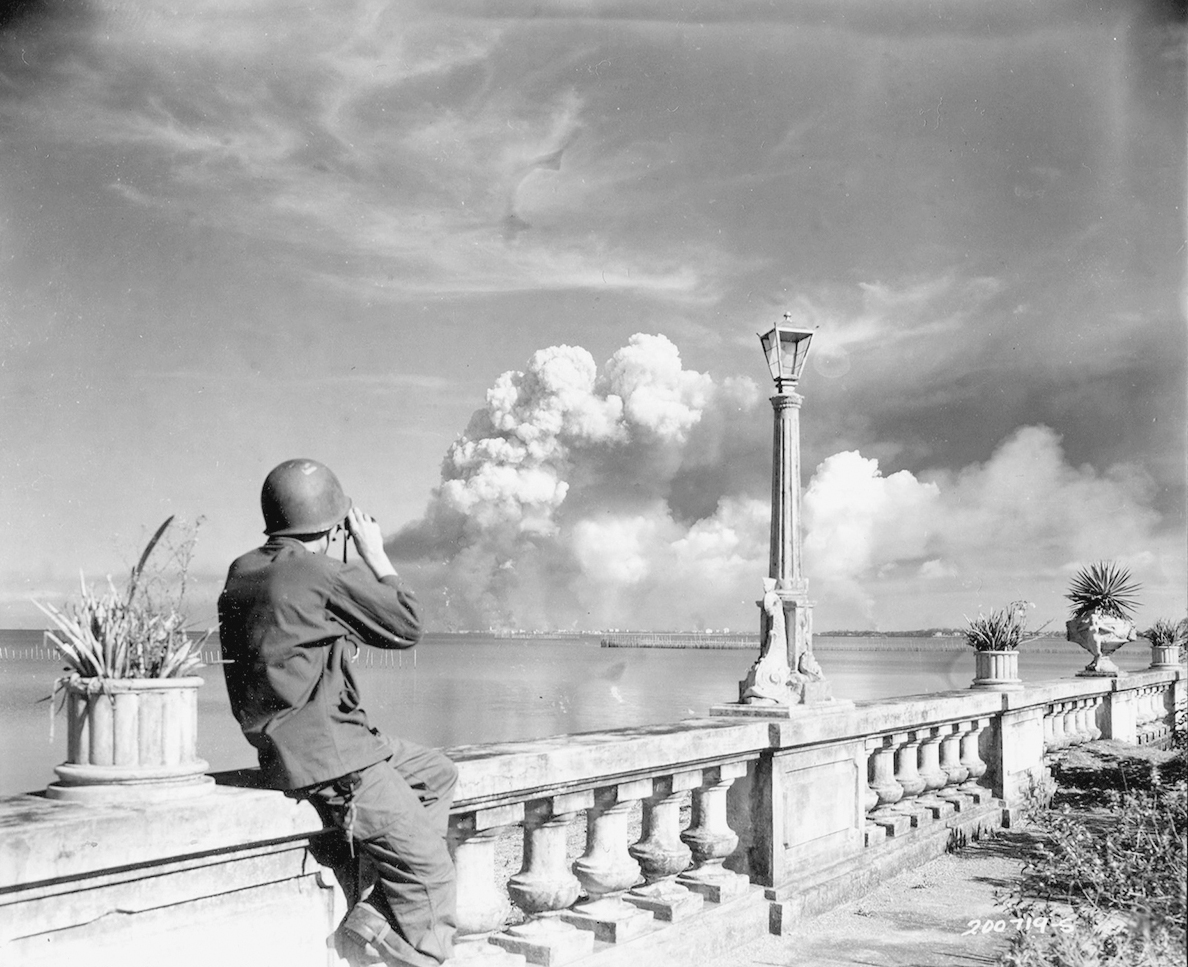
An American soldier watches Manila burn from the beach at Parañaque on February 8, 1945.
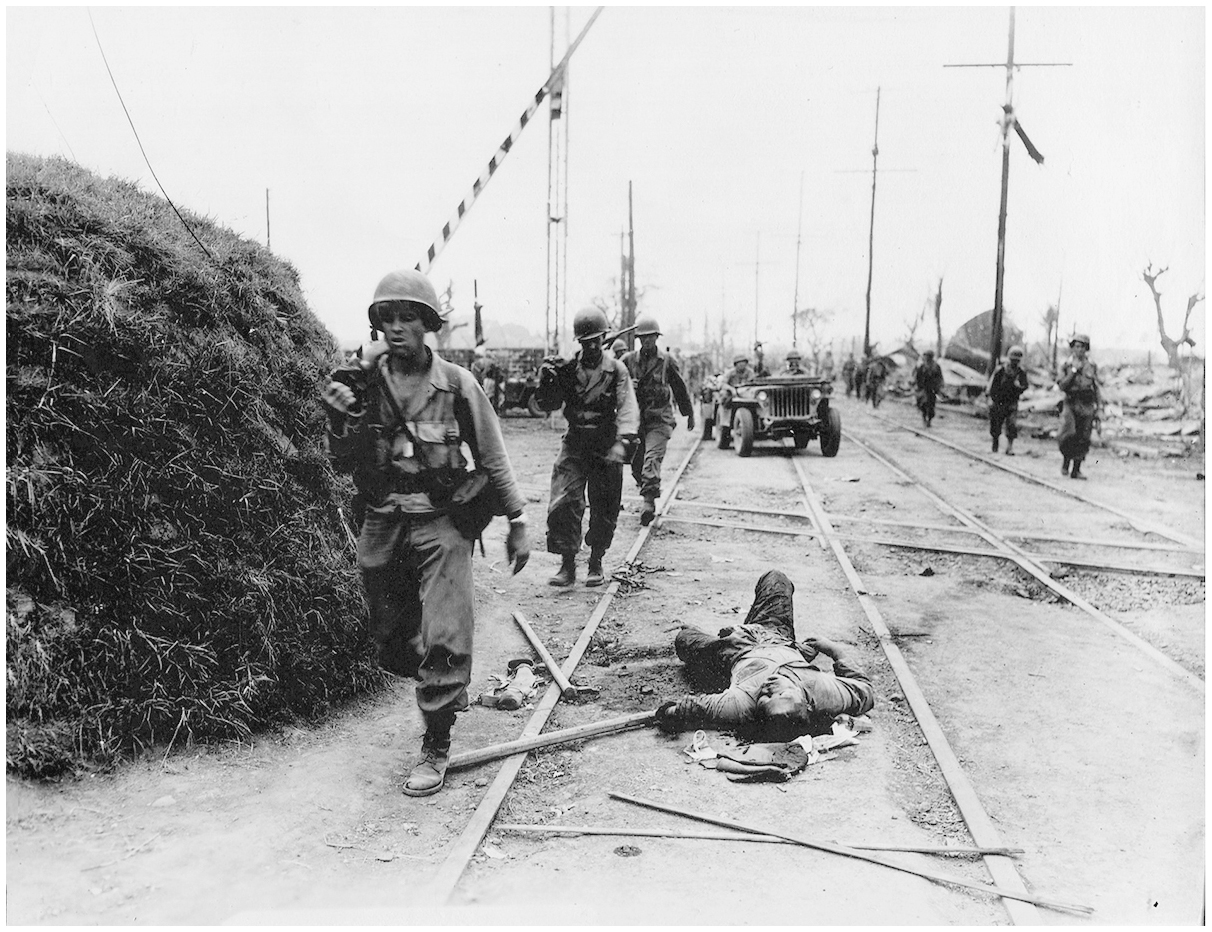
Troops with the First Cavalry Division advance past a dead Japanese soldier sprawled out in the street in the district of Paco on February 12, 1945.
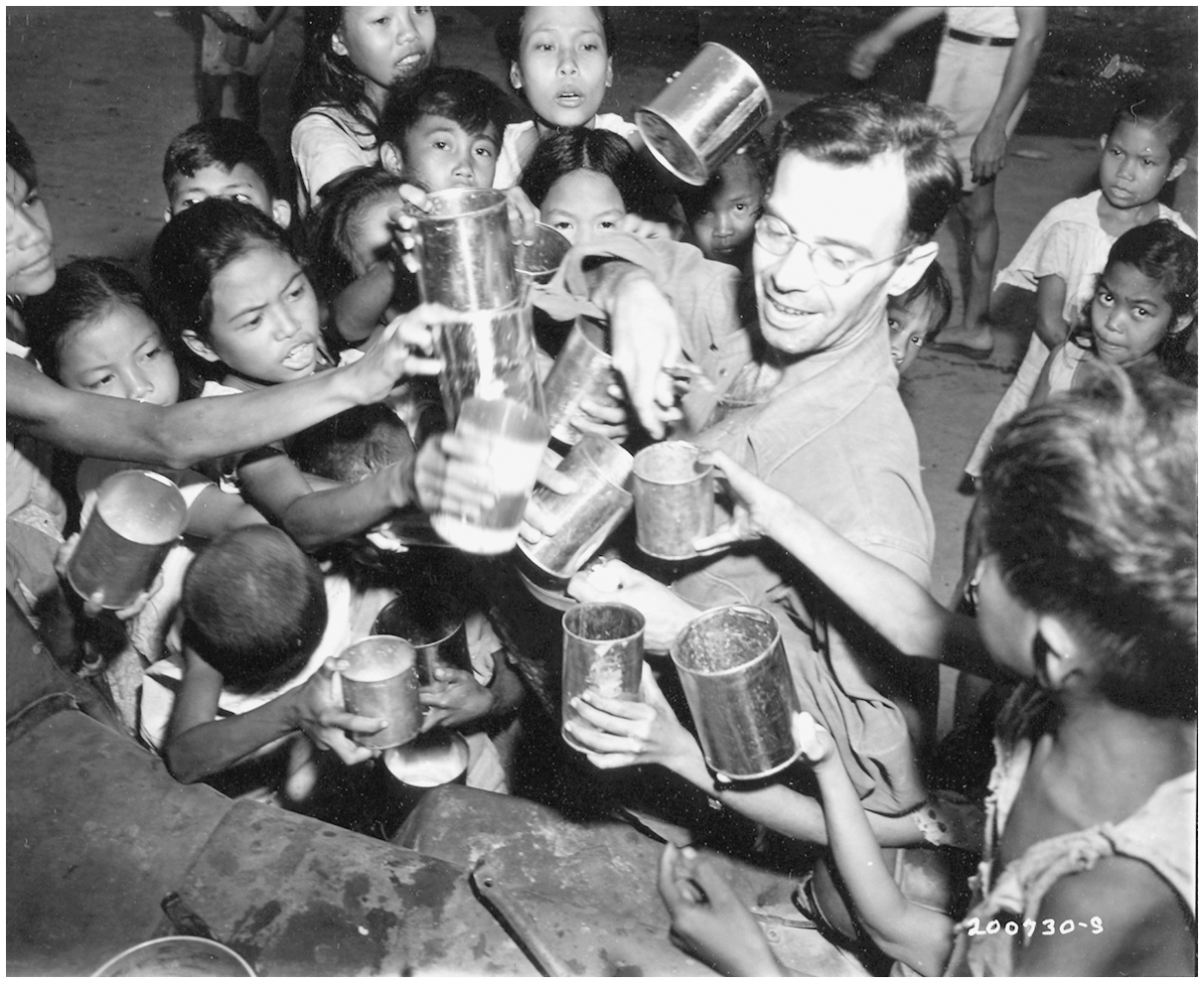
Hungry Filipino children, after years of starvation, mob Technician Fifth Grade David Kind of Detroit for food on February 12, 1945.
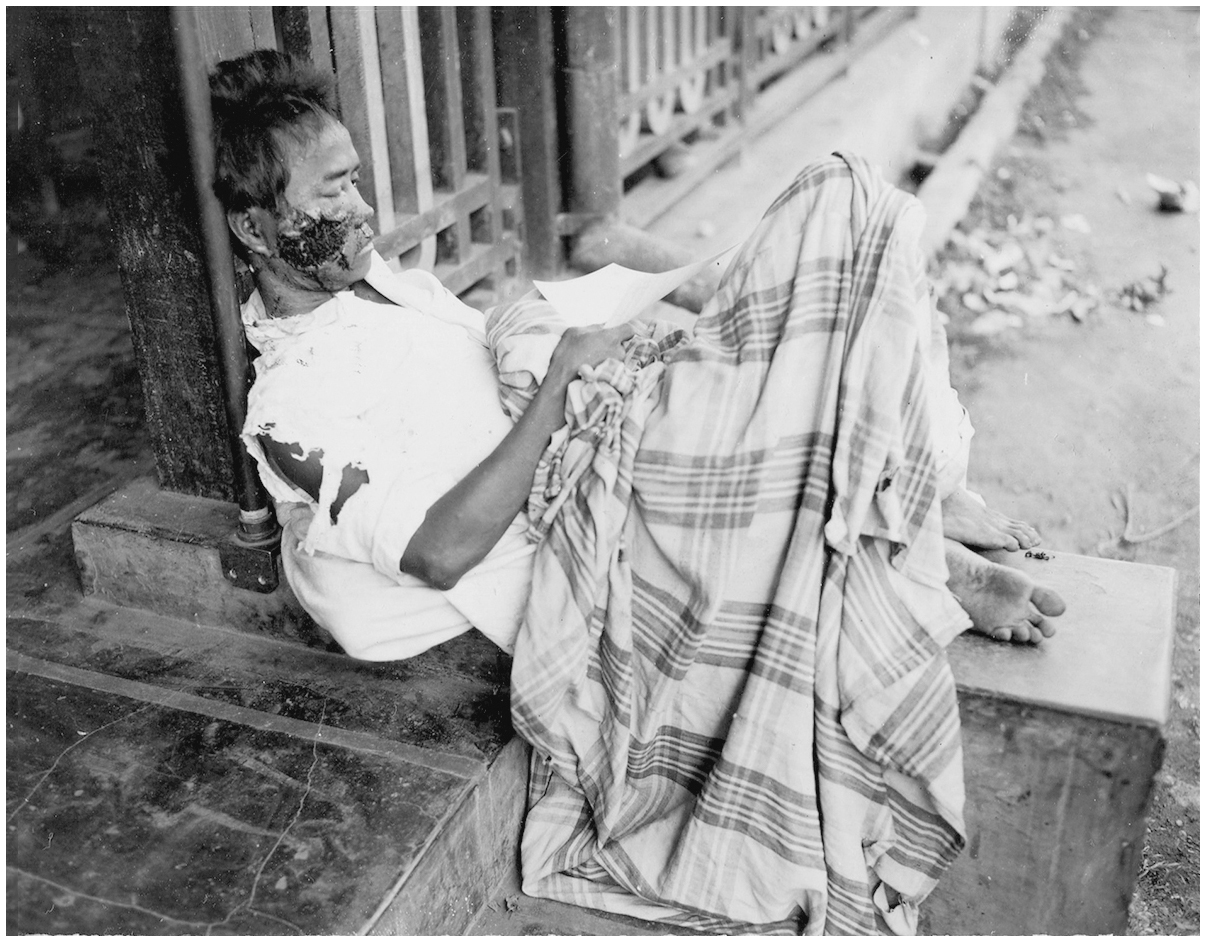
The hordes of wounded crowding San Lazaro Hospital have forced this refugee, with half of his right cheek ripped away by shrapnel from a Japanese hand grenade, to lean against a wall by the steps on February 13, 1945.
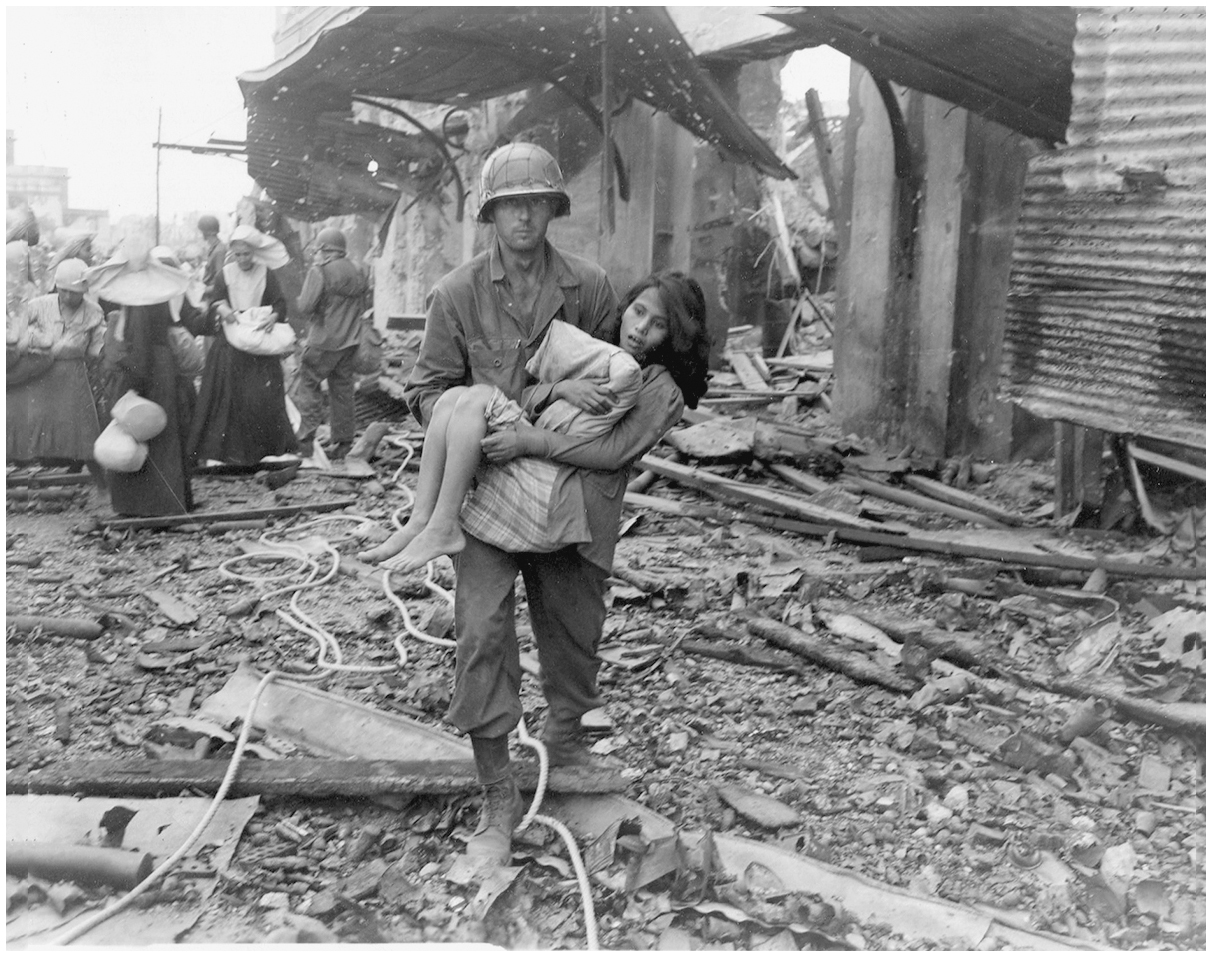
An American soldier carries a wounded girl to a boat landing in preparation to evacuate the ruins of the Walled City on February 23, 1945.
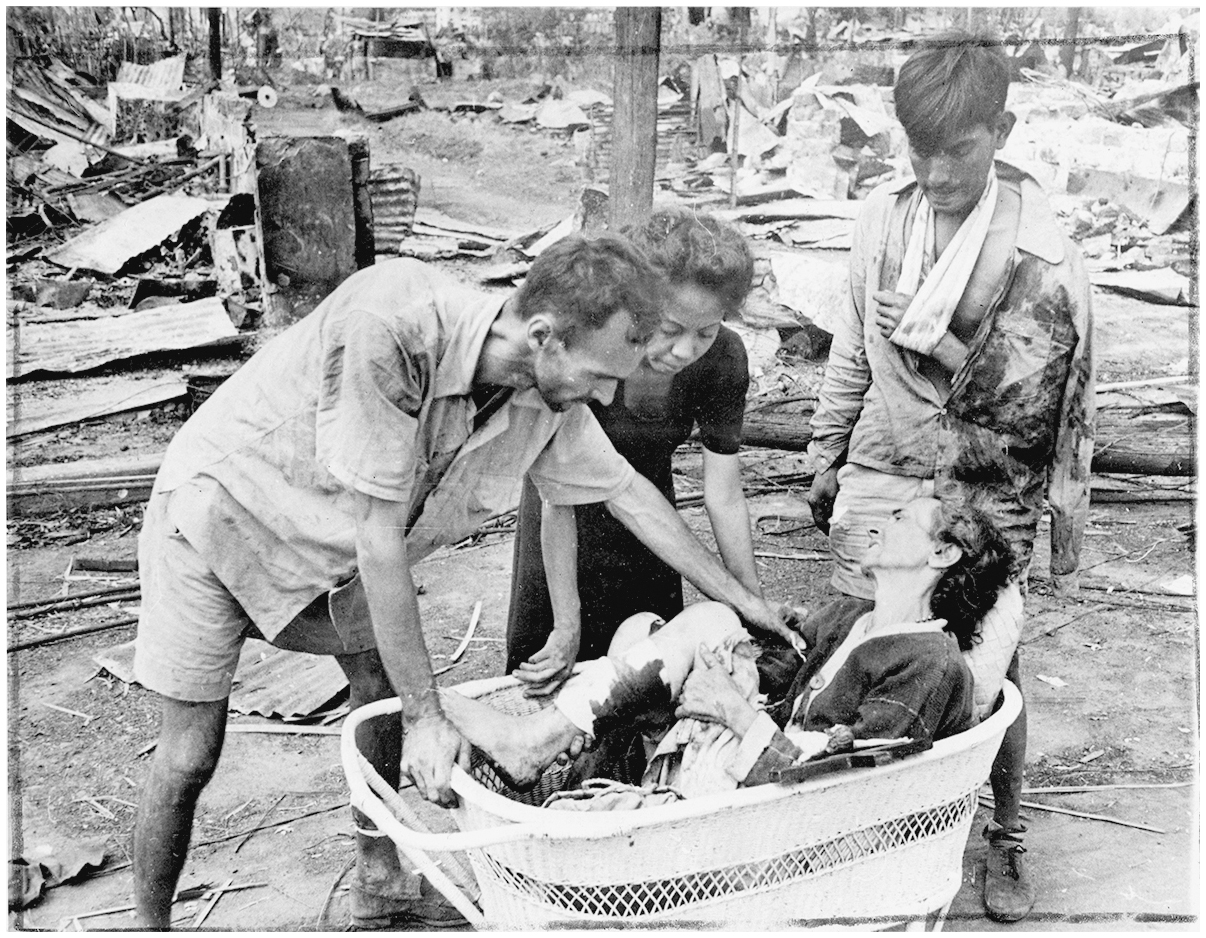
A resident of Manila, wounded during the fighting for the Philippine capital, is placed in a basket by neighbors for transportation to a first aid station.
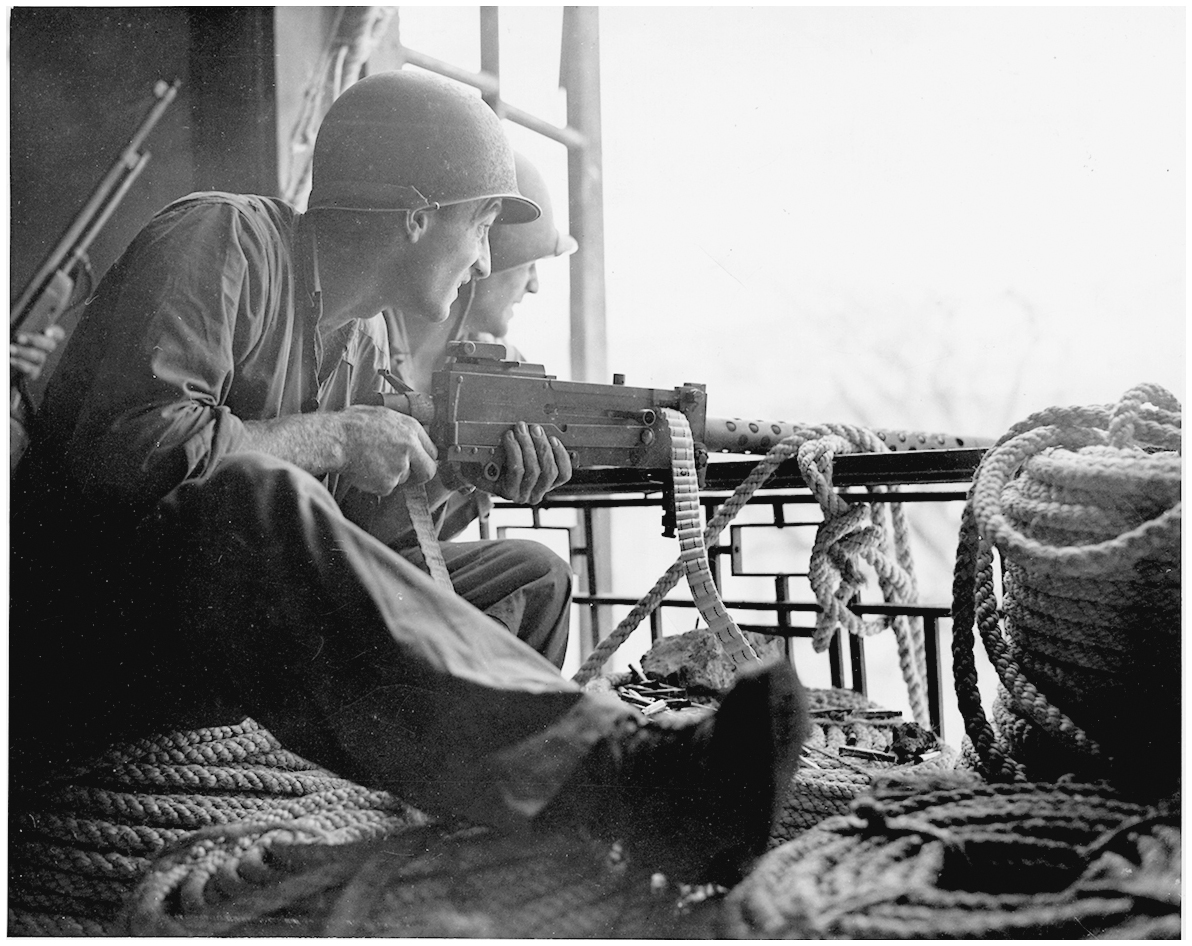
An American machine gun crew covers the advance of an assault team en route to take a Japanese-held building during the bloody fight for the University of the Philippines.
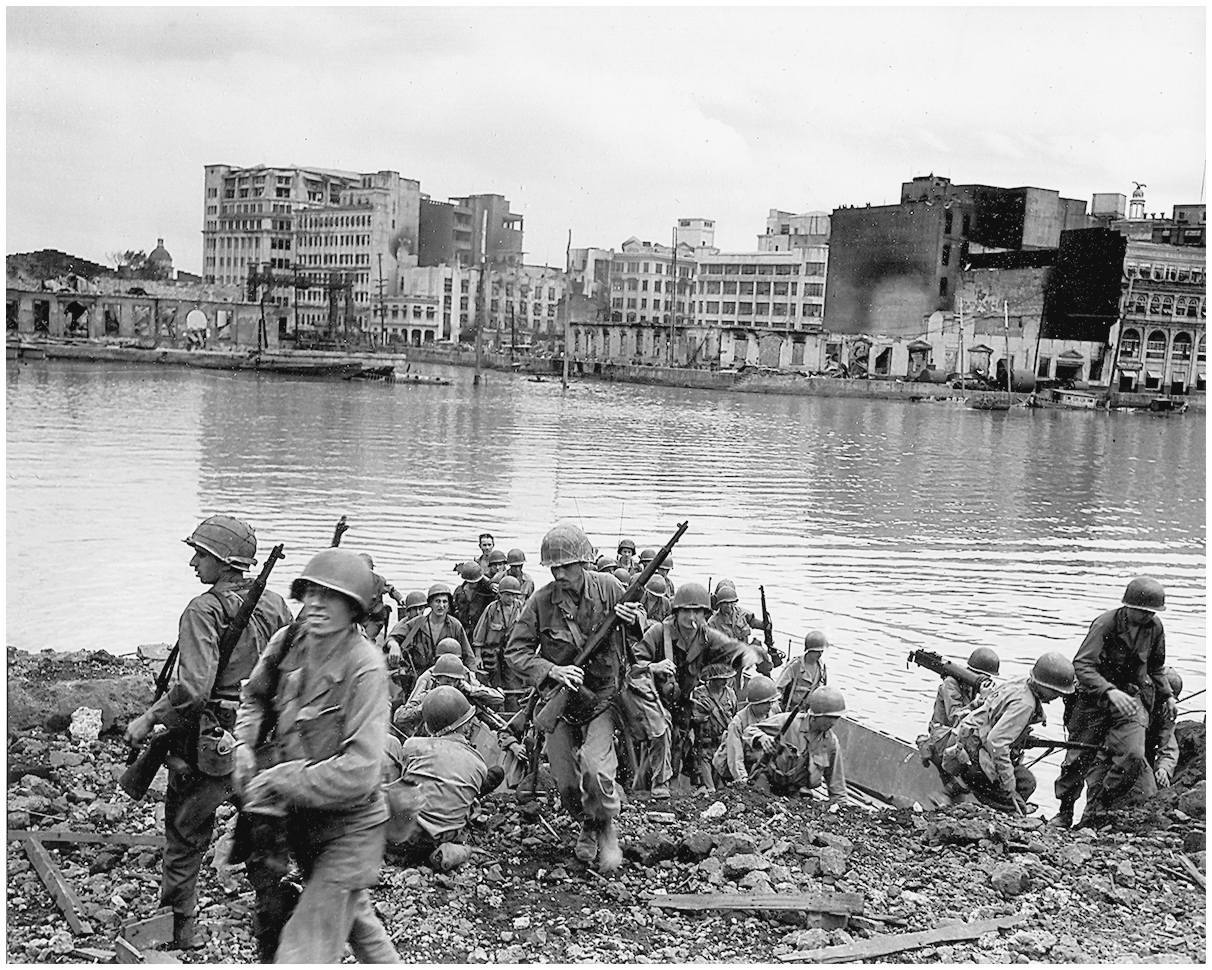
American troops storm the south bank of the Pasig River during the assault on the Walled City on February 23, 1945.
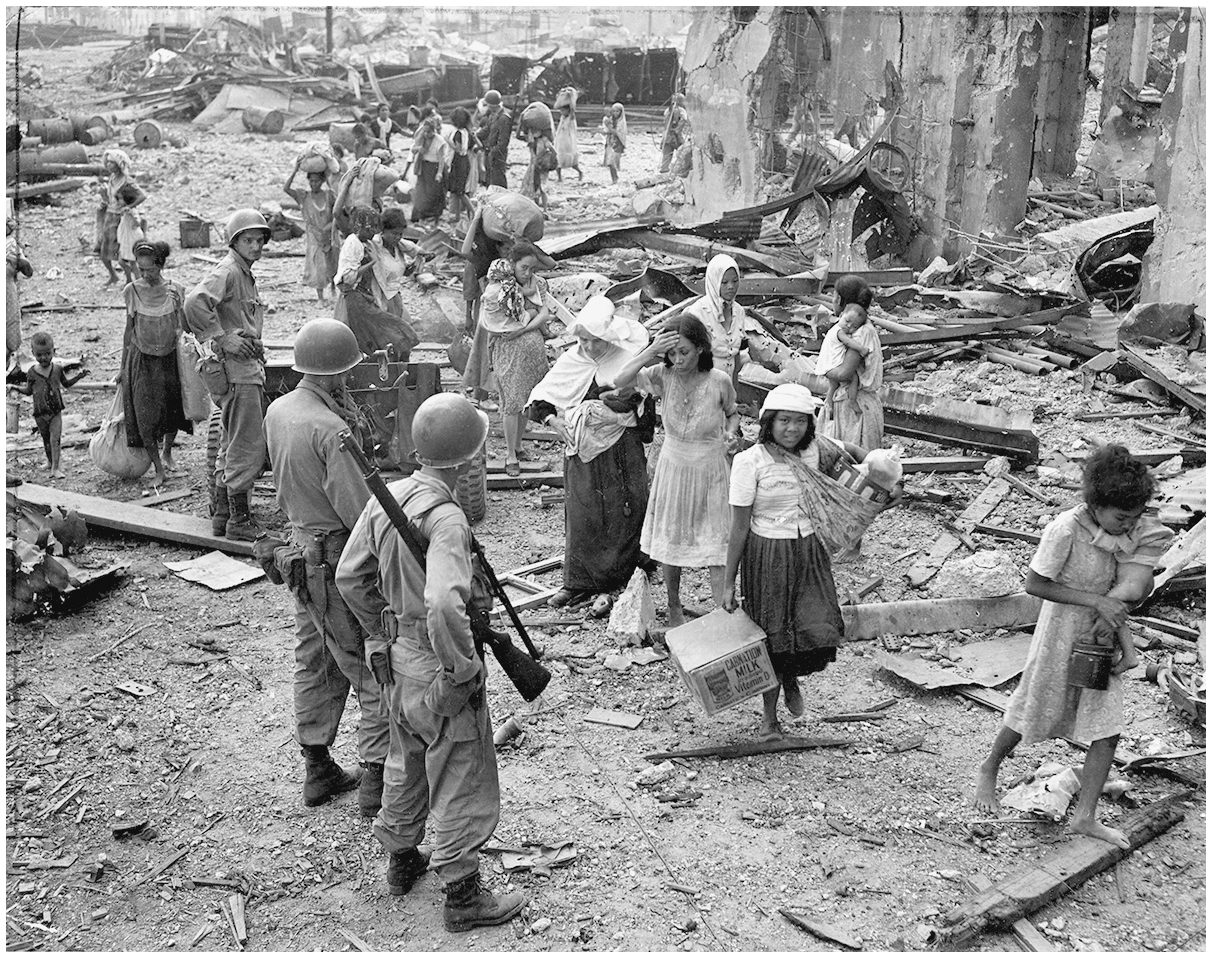
Filipino refugees, many barefoot, pick through the wreckage of northern Manila, having just crossed the Pasig River following the fight for the Walled City. The nun carries a motherless infant born just three days earlier.
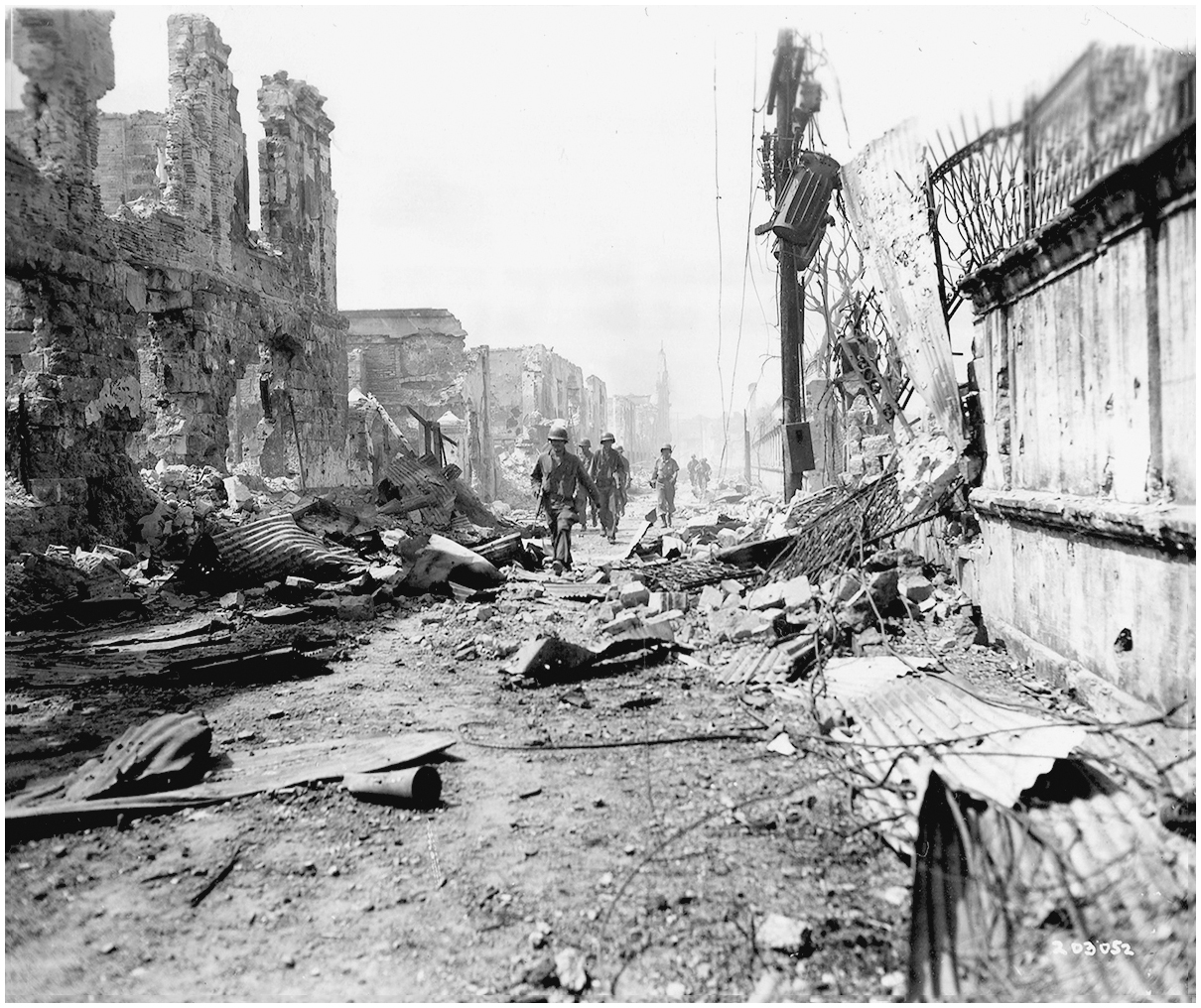
A platoon of American troops moves in to take the Walled City on February 23, 1945.
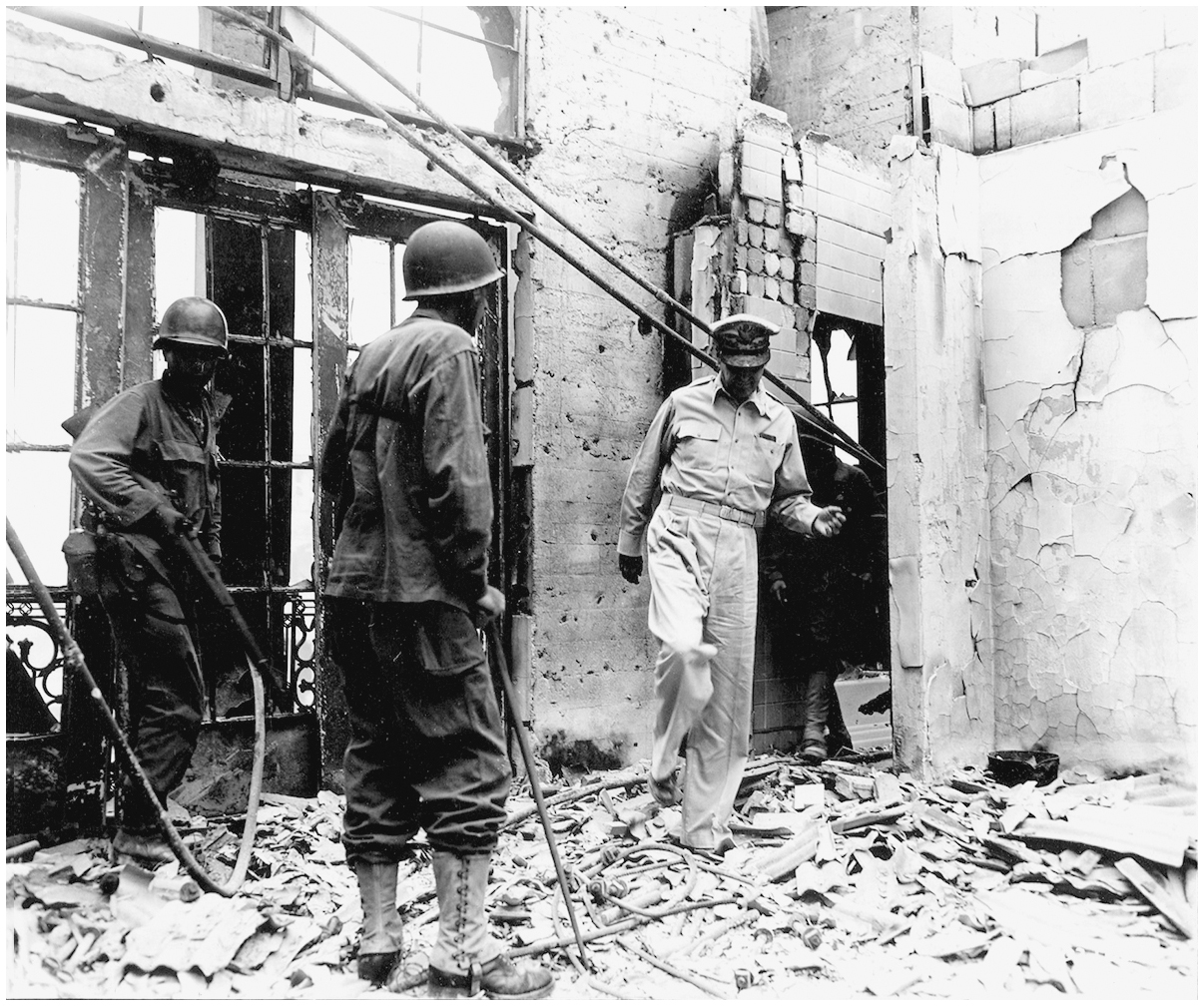
Amid the fighting for the Walled City, MacArthur returns to the ruins of his home atop the once-luxurious Manila Hotel on February 23, 1945.
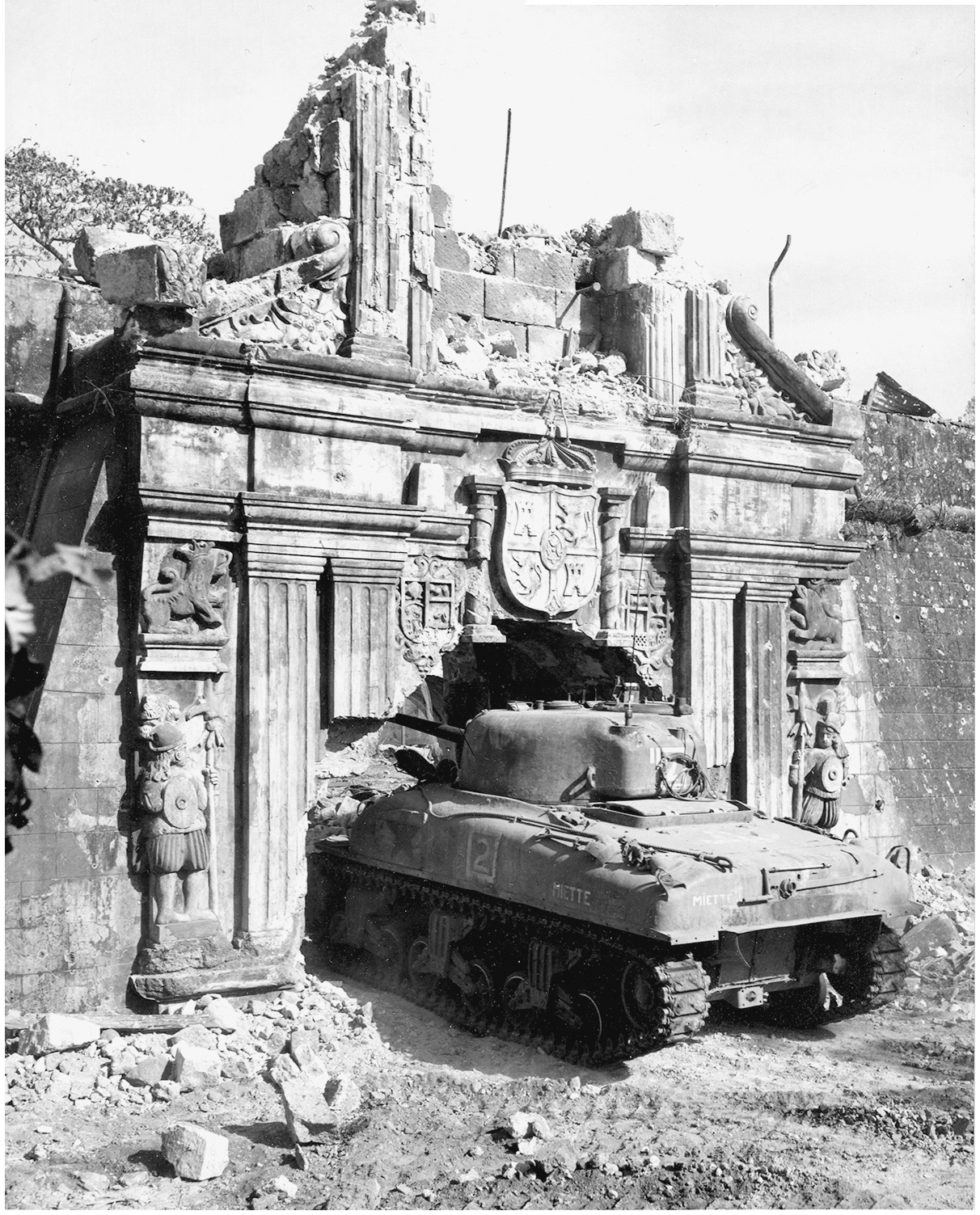
An American tank rumbles through the historic gate of Fort Santiago inside the Walled City on February 26, 1945.

American troops found dead women and children inside the Walled City on February 23, 1945.
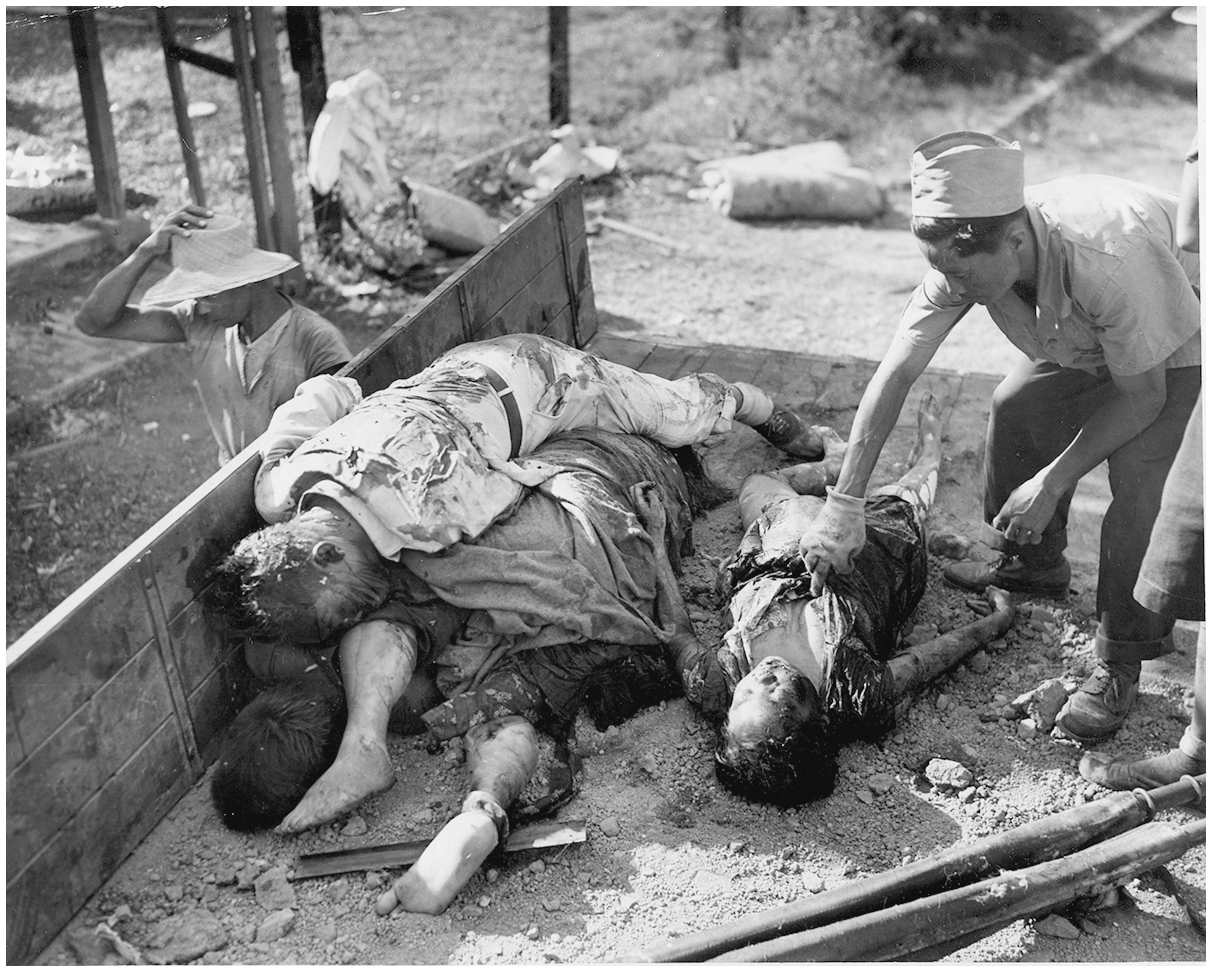
A Filipino examines several dead bodies at the Philippine General Hospital for any sign of identification before the remains are hauled away for burial.
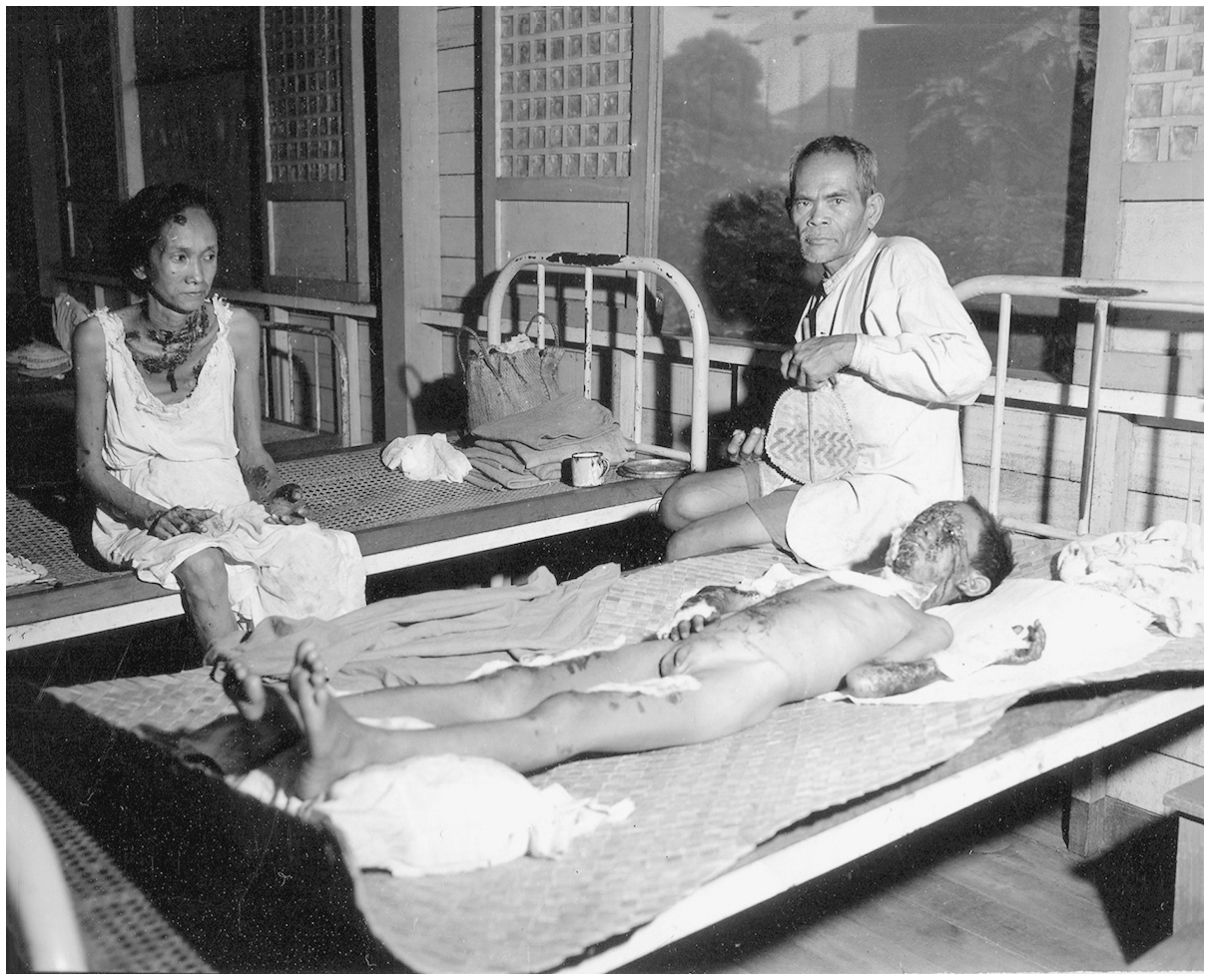
Isobela Mercado and her husband Angel Estandarte tend to their badly injured son Jose after the Japanese locked the family’s home and set it on fire. The family escaped, only to be burned by Japanese flamethrowers.
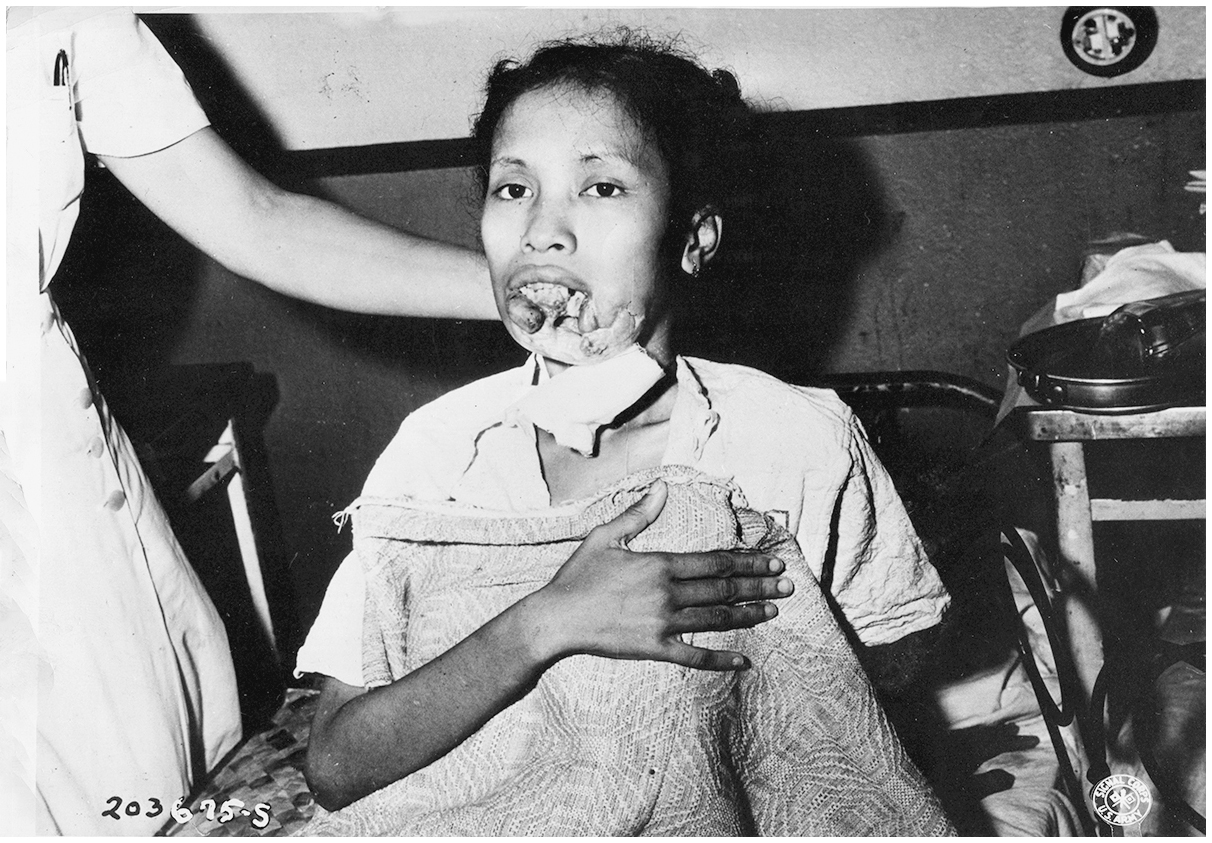
Lourdes Ental, pictured here in San Lazaro Hospital on March 2, 1945, was hit in the face by grenade shrapnel after she fought off Japanese troops who tried to assault her.
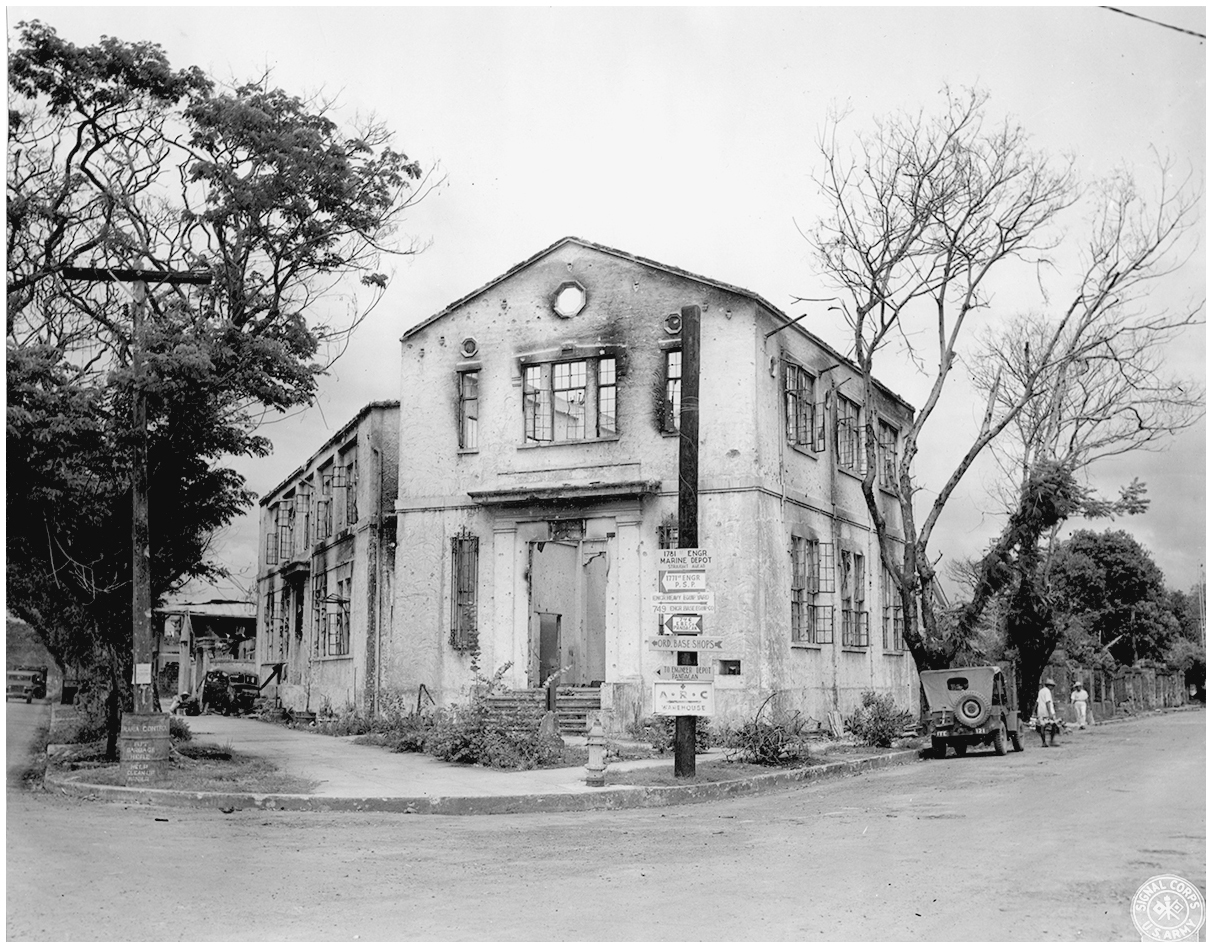
The torched ruins of the Red Cross Headquarters in Manila, where Japanese marines slaughtered more than fifty men, women, and children in a rampage on February 10, 1945.
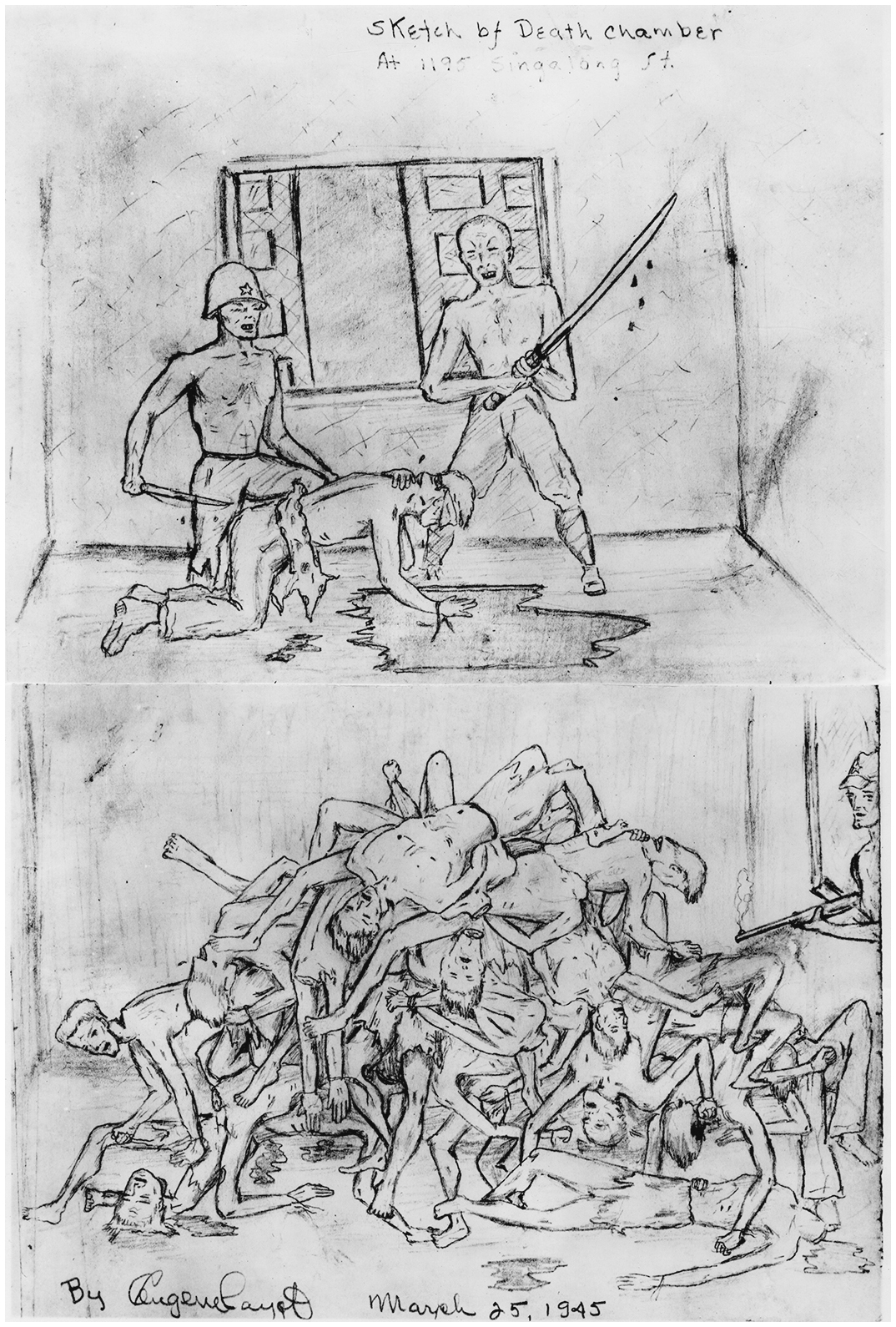
Eugene Bayot, who survived Japanese efforts to decapitate him with a sword, later sketched for war crimes investigators the inside of the Singalong Street death house, where enemy troops beheaded approximately two hundred men on February 10, 1945.
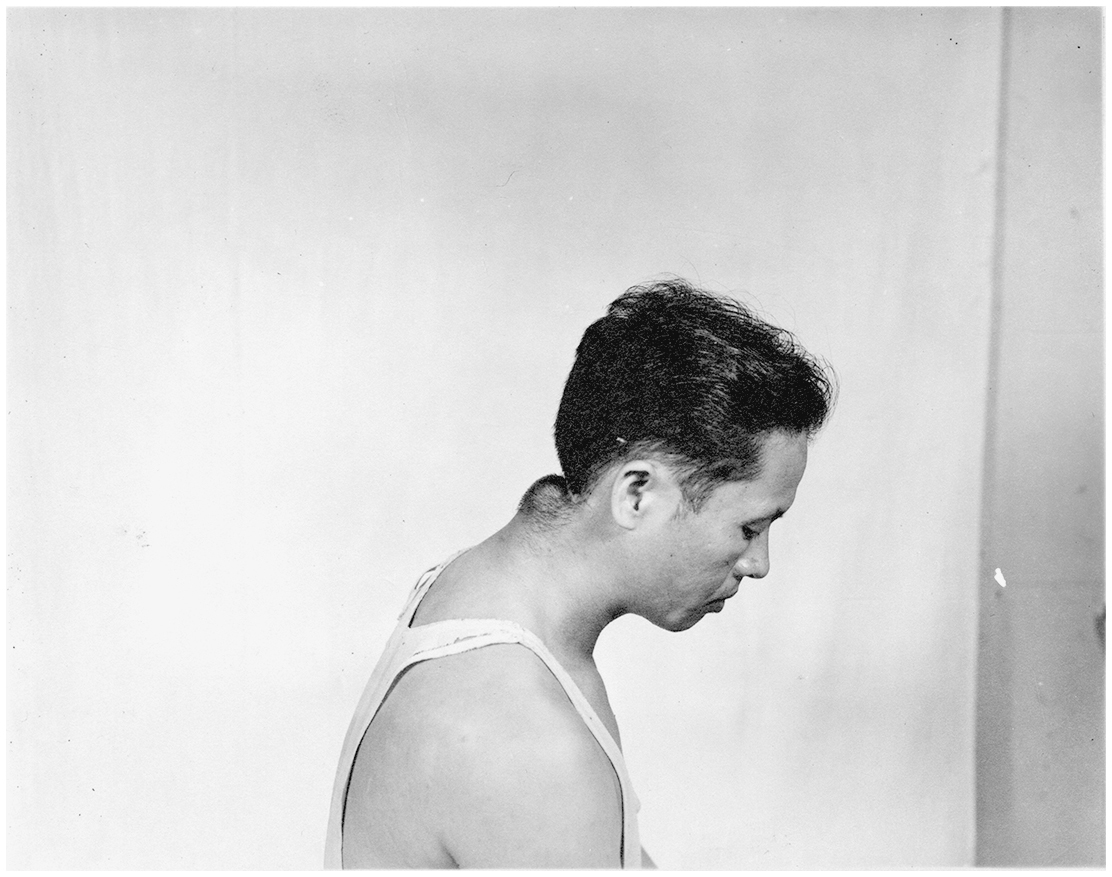
Cheng Suy, one of the few survivors of the Singalong Street death house, shows war crimes investigators the deep divot in his neck that resulted from the failed Japanese effort to decapitate him.
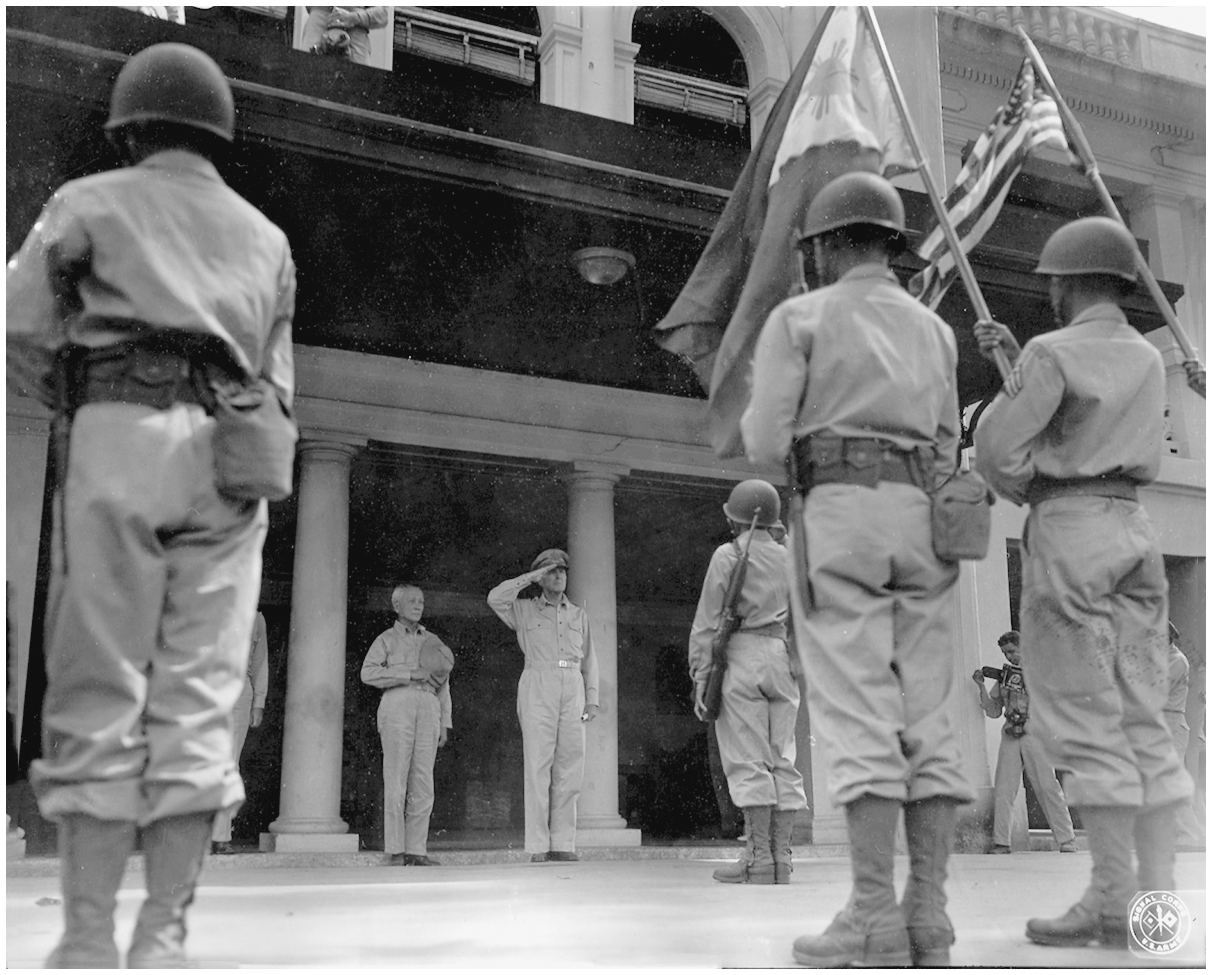
Gen. Douglas MacArthur, with President Sergio Osmeña at his side, salutes the color guard at Malacañan Palace during a ceremony to hand over power to the Philippine government on February 27, 1945.
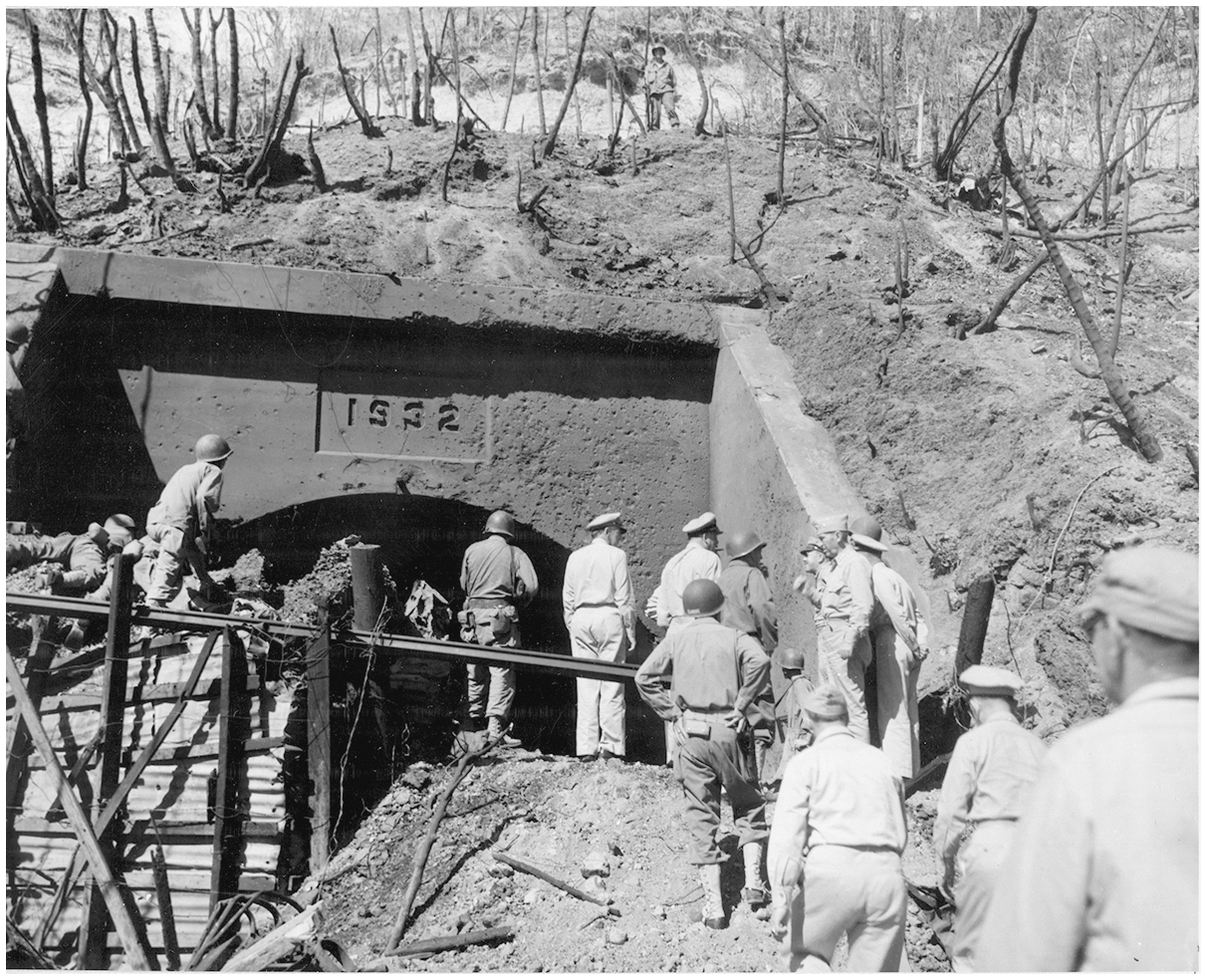
MacArthur peers inside the wrecked Malinta Tunnel on his visit to newly captured Corregidor on March 2, 1945.
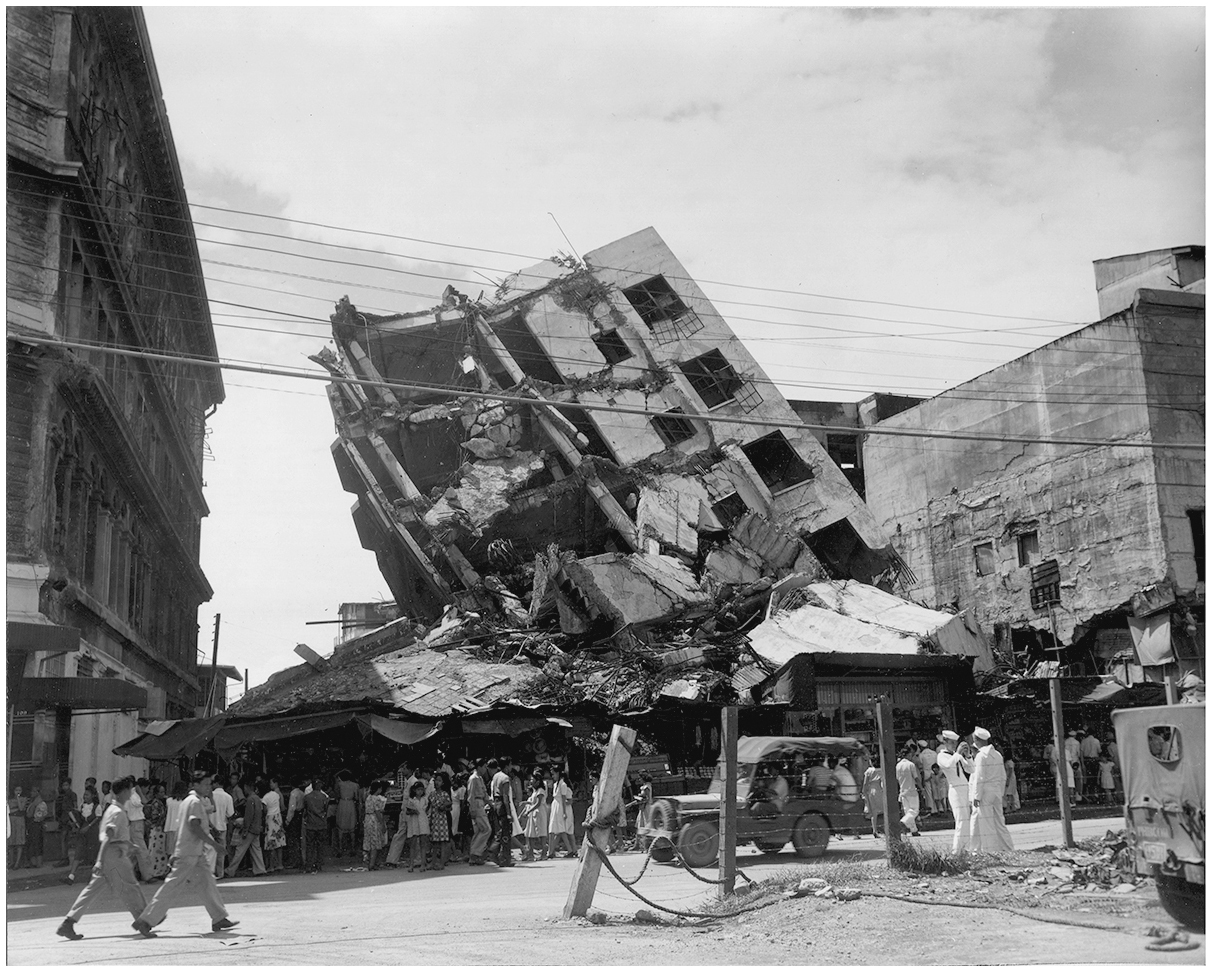
Residents stroll past the wrecked Cu-Unjieng Building on the Escolta, which was once known as Manila’s Fifth Avenue.
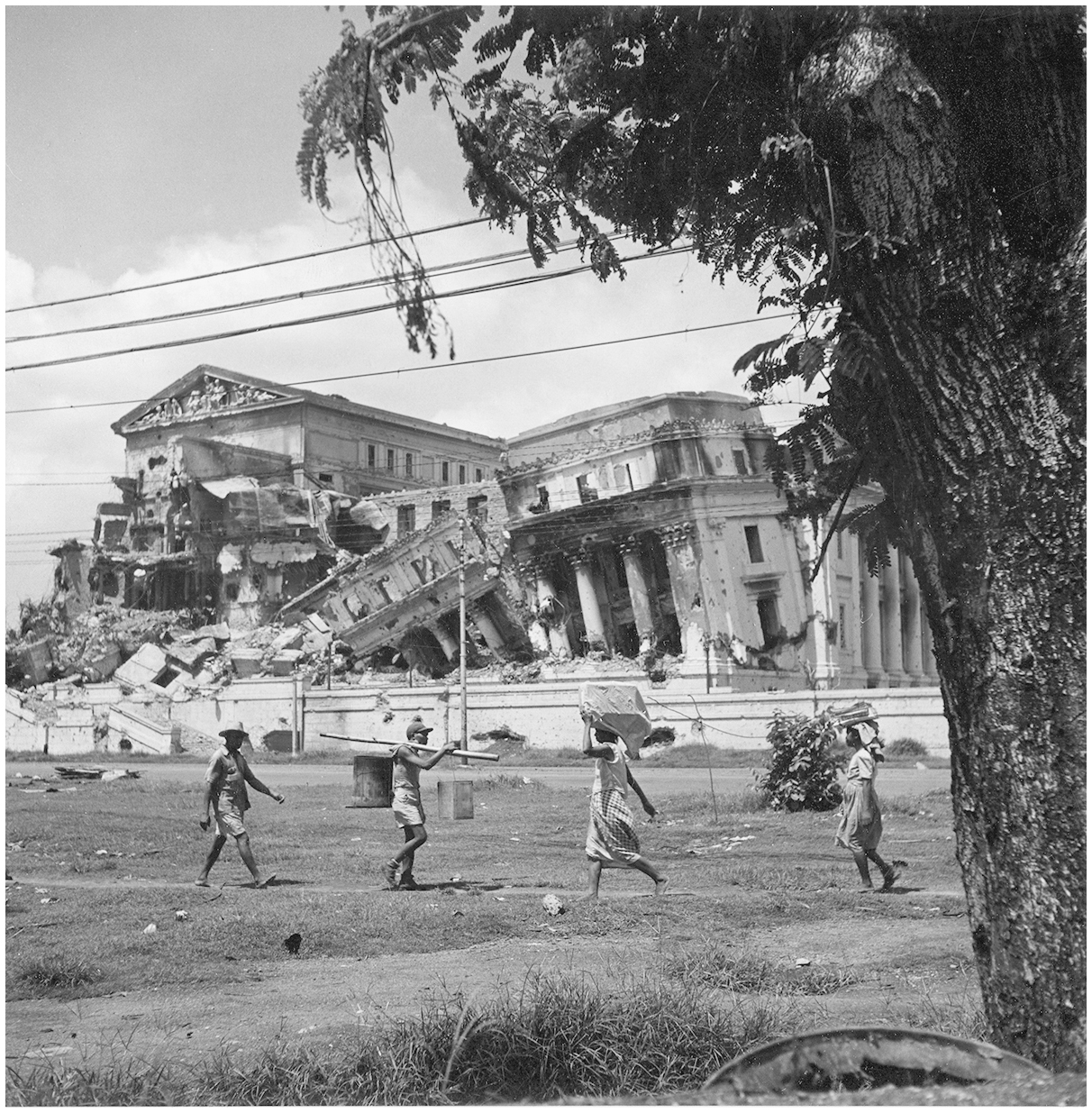
Life goes on as Filipinos walk in front of the ruins of the Philippine Legislature in May 1945.
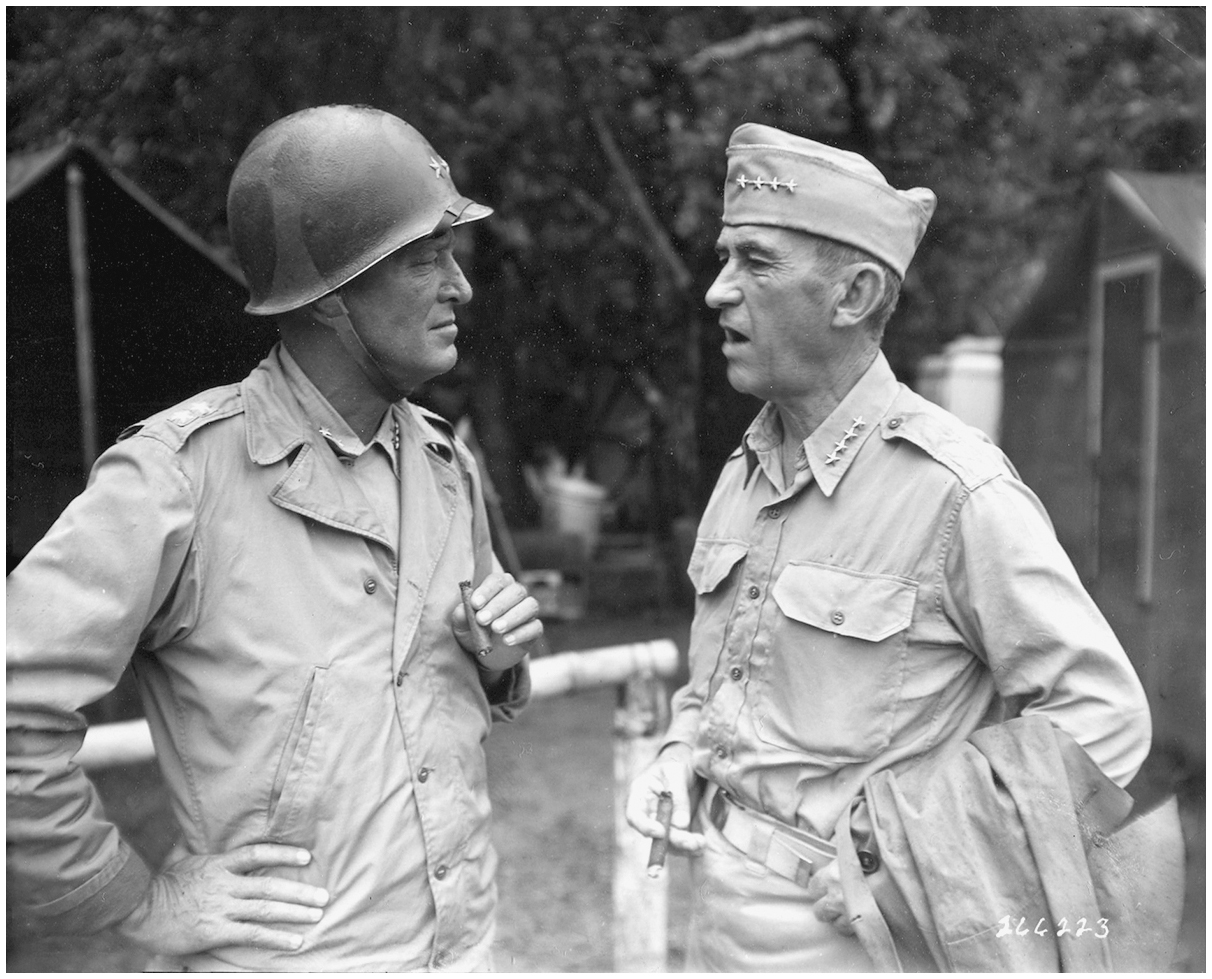
Sixth Army Commander Gen. Walter Krueger, right, confers with Maj. Gen. Charles Mullins, Jr., on April 7, 1945.
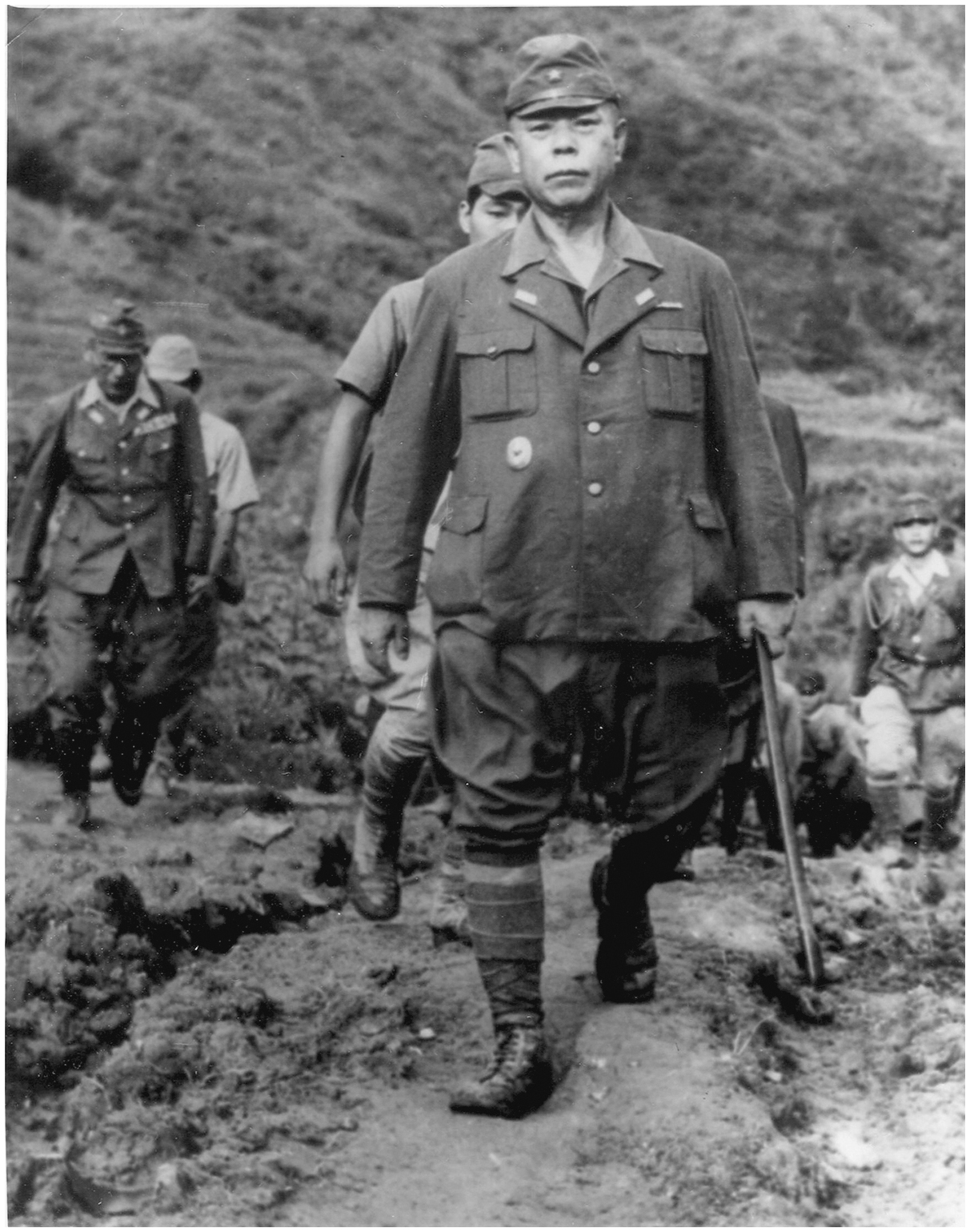
The elusive Tiger of Malaya, Gen. Tomoyuki Yamashita, hikes down out of the mountains to surrender to American forces on September 2, 1945.
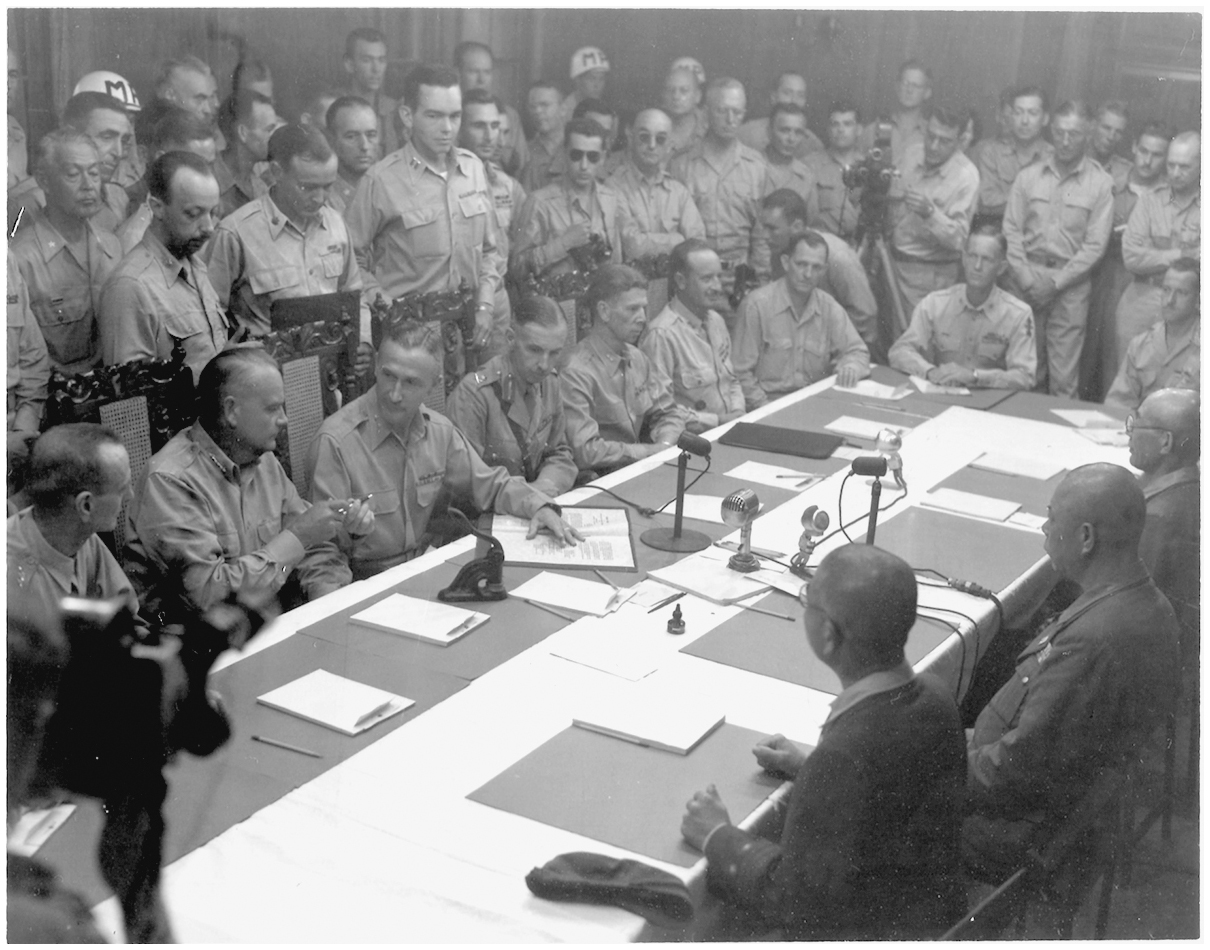
Yamashita, pictured second on the right, surrenders his forces in Baguio on September 2, 1945. Seated directly across from him, with his hair parted and looking down, is British Lt. Gen. Arthur Percival, whom Yamashita defeated in Singapore at the start of the war.
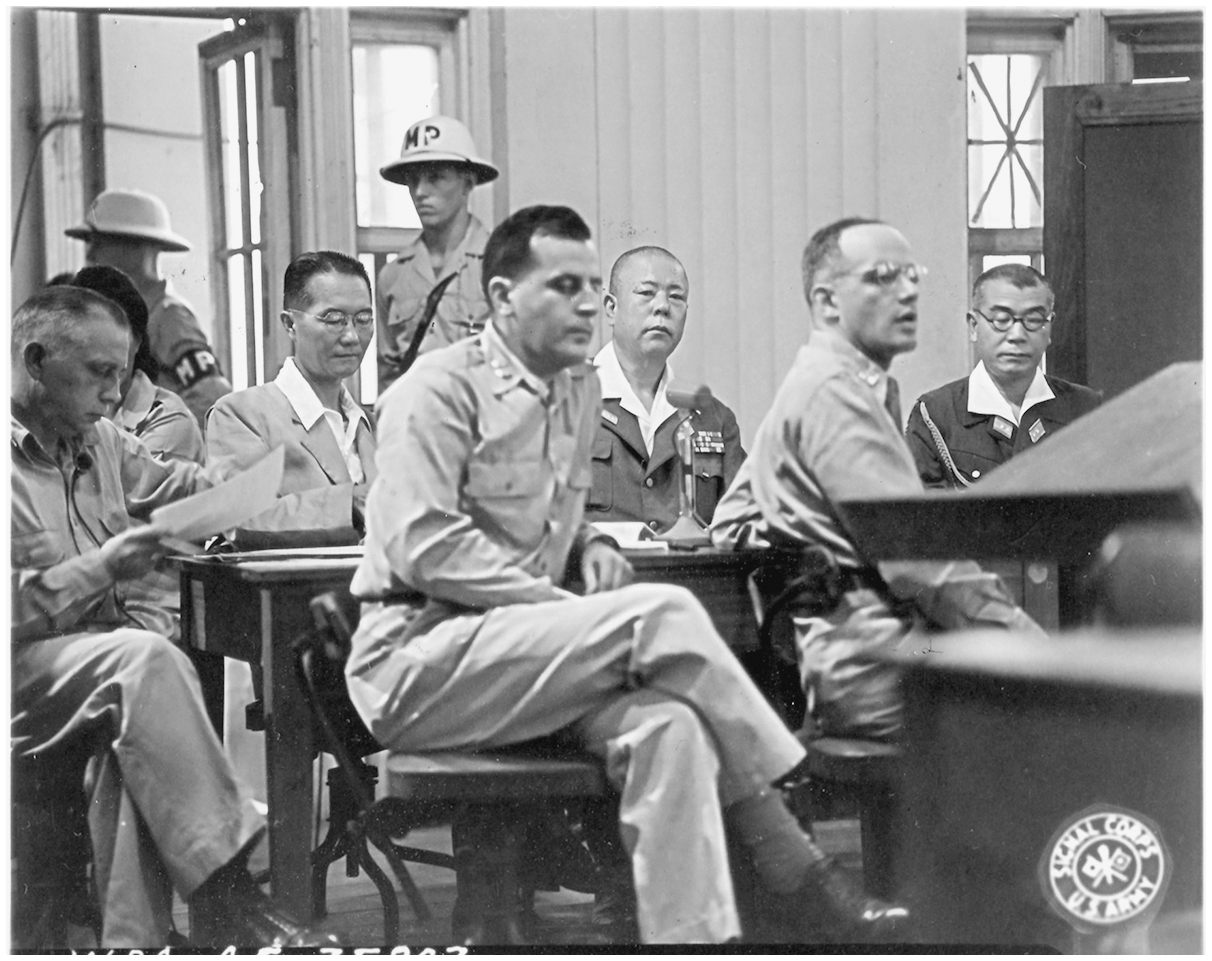
Yamashita, flanked on the right by Lt. Gen. Akira Muto and on the left by interpreter Masakatsu Hamamoto, sits through the war crimes trial on October 29, 1945. In front of Yamashita, seated left to right, are defense lawyers Col. Harry Clarke, Capt. Milton Sandberg, and Capt. Frank Reel.
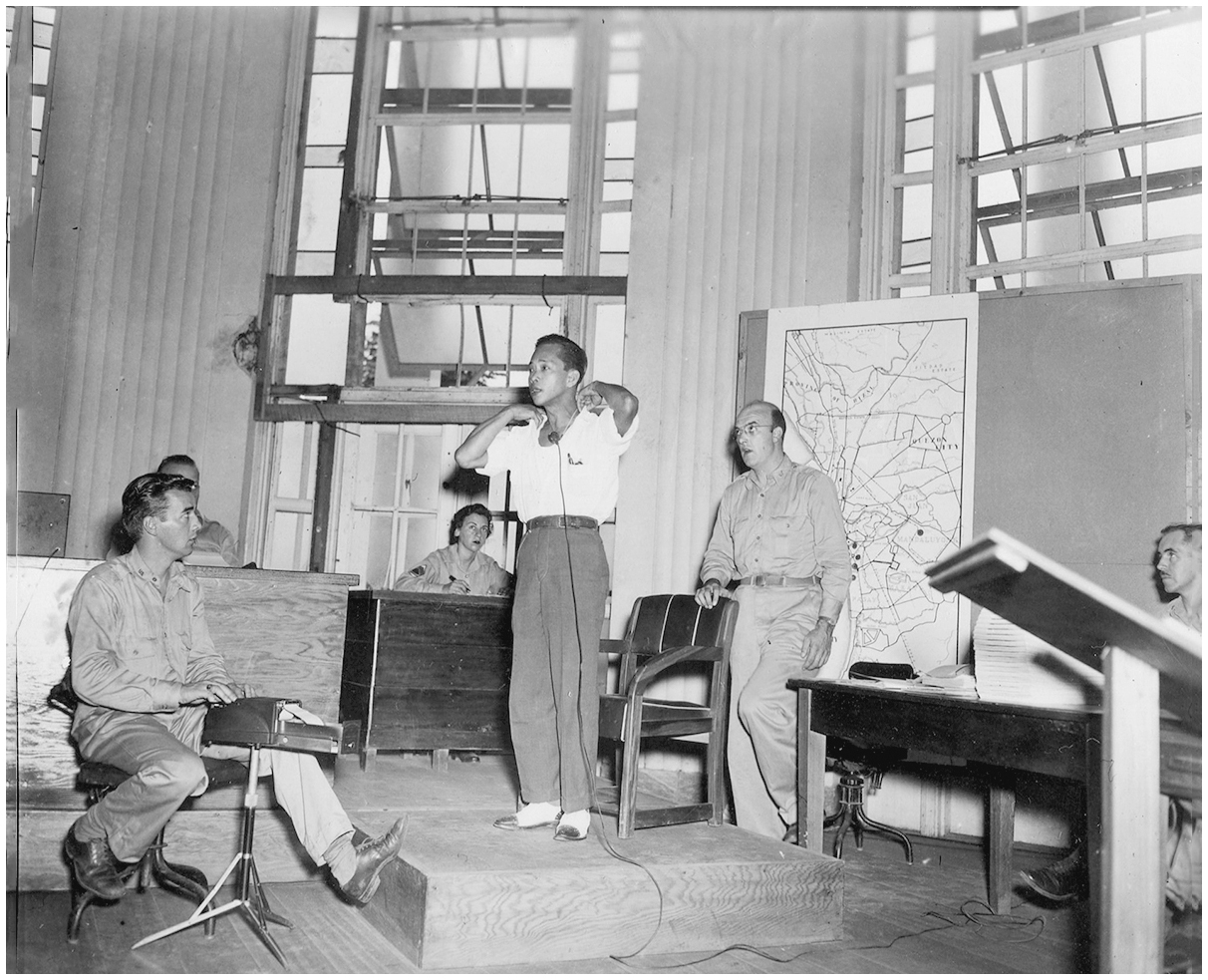
Ricardo Esquerra, who was nearly decapitated in the Singalong Street death house, shows the wounds on the back of his neck during the Yamashita trial on November 3, 1945.
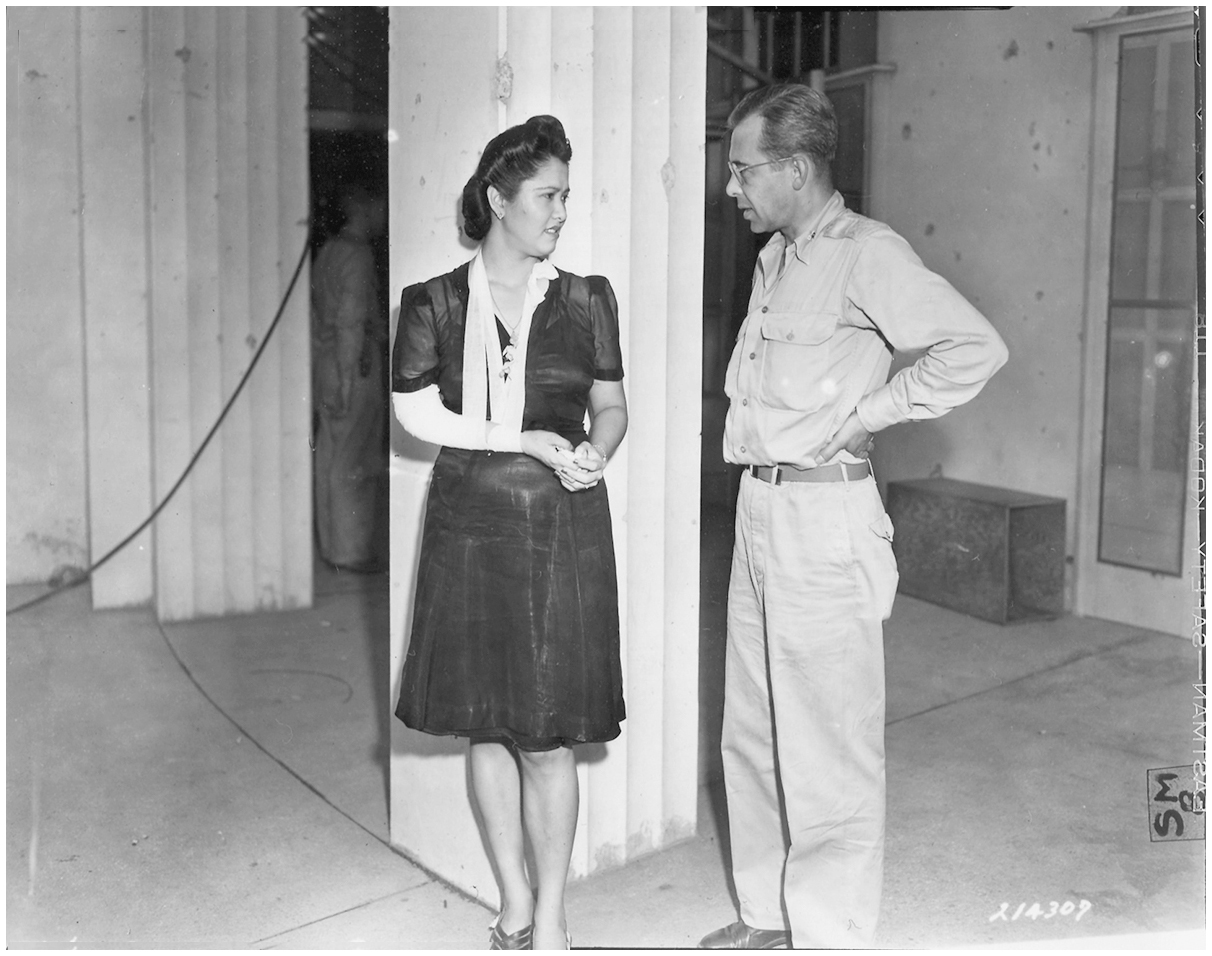
Maj. Milton Herr talks to famed Filipina actress Corazon Noble, who was shot and bayoneted inside the Red Cross Headquarters, outside the Yamashita trial on November 29, 1945. Japanese forces killed Noble’s ten-month-old daughter, Maria Lourdes Vera, during the massacre.
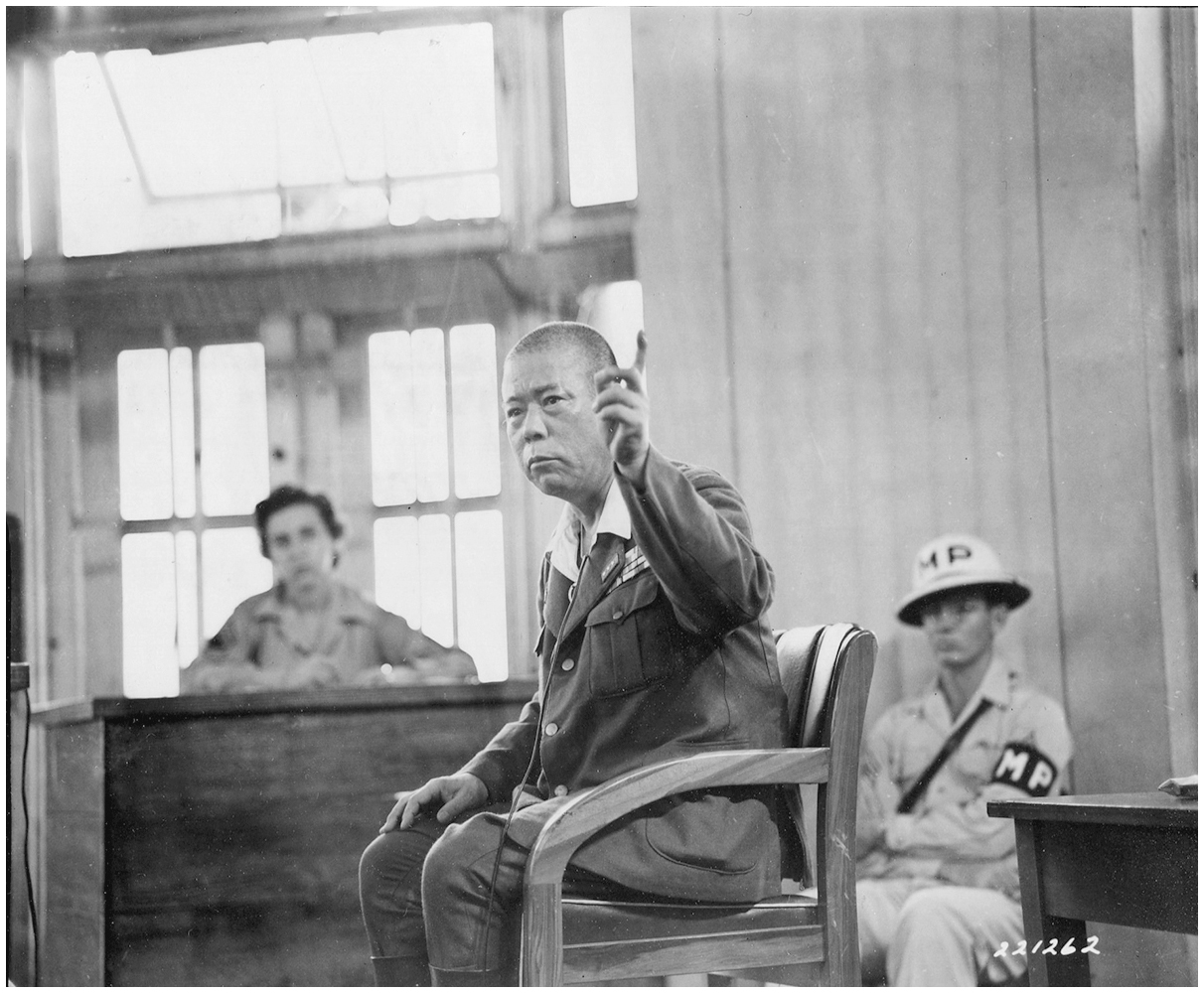
Gen. Tomoyuki Yamashita testifies in his defense in a packed Manila courtroom on November 28, 1945.
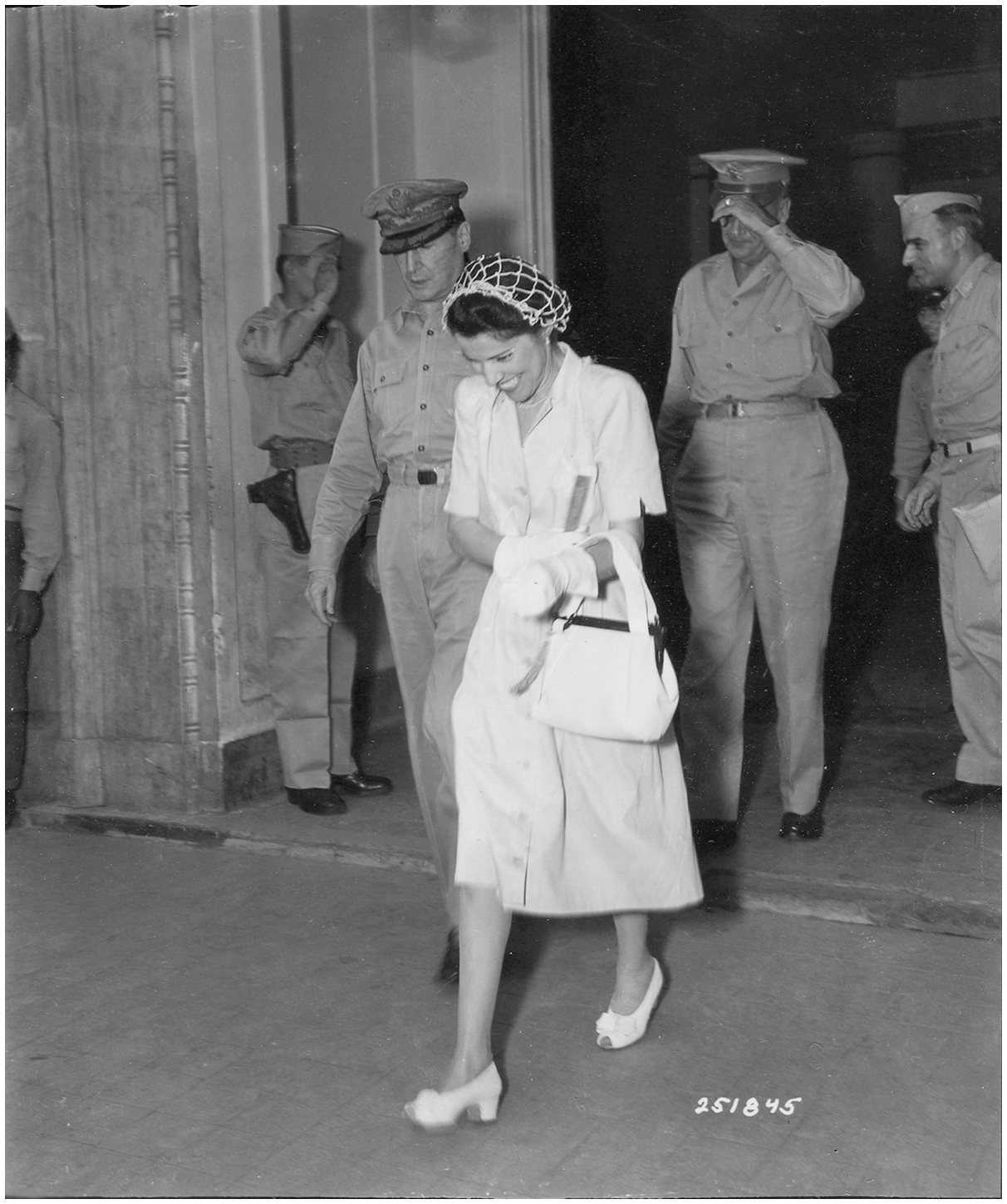
Jean MacArthur, pictured here with her husband in July 1946, returned to Manila soon after the battle ended.
